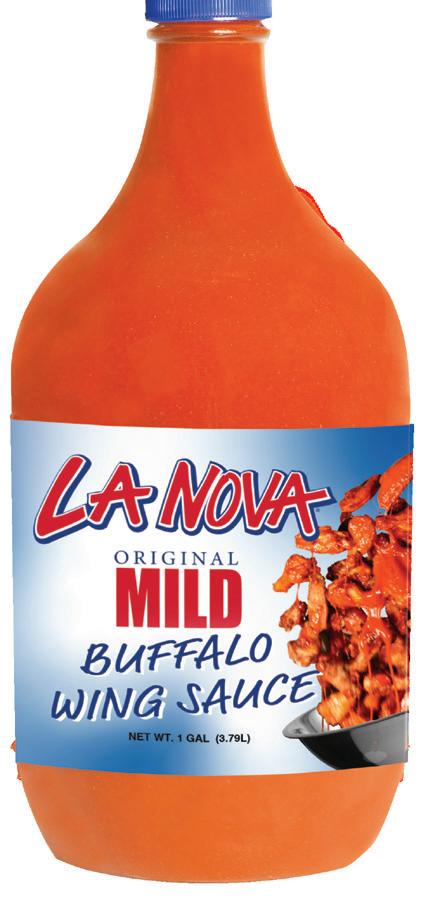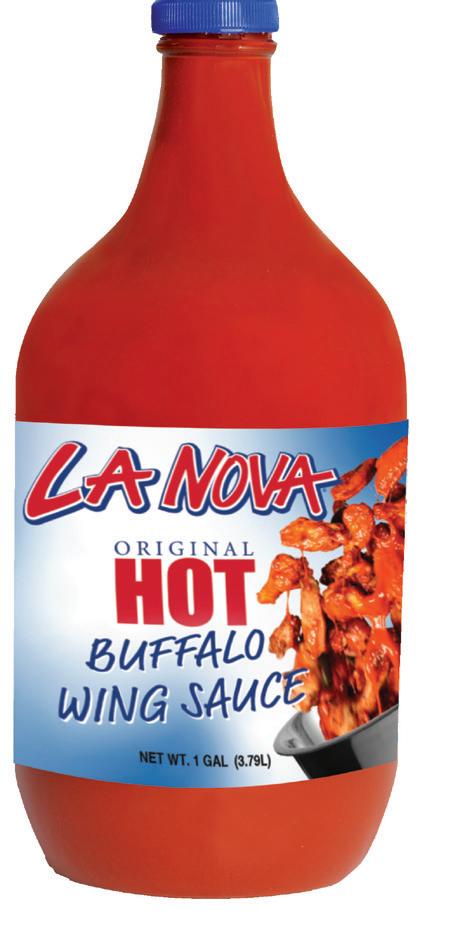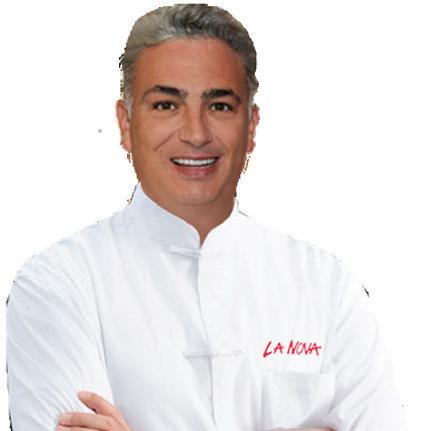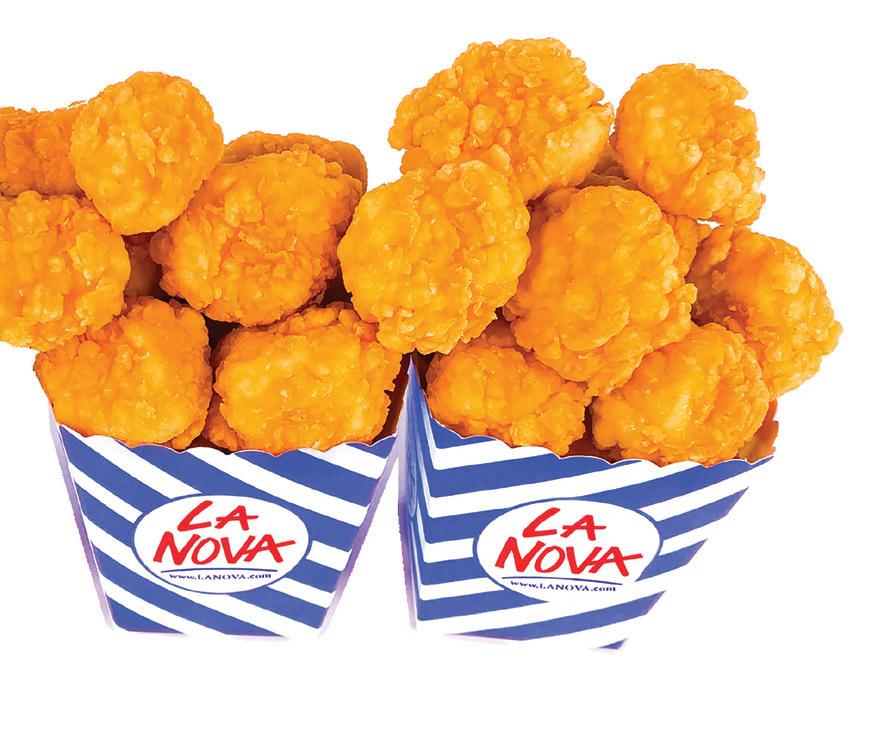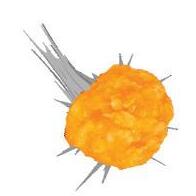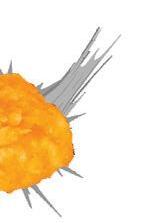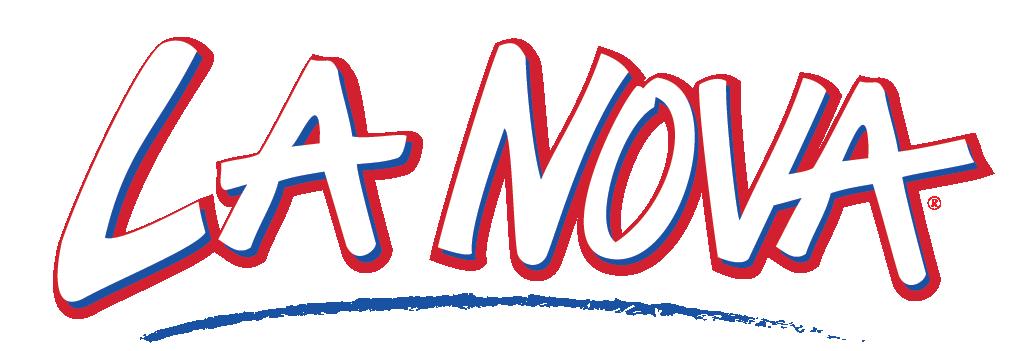Finnish Strong



you
products?
The Bellissimo Foods Company distributor network includes 50+ locally owned and operated distributors who proudly distribute the world’s best Italian and Mediterranean products. They are 100% committed to servicing the hardworking owner/ operators that define our pizza industry, especially during pandemic and food sourcing issues.
By partnering with a specialty distributor, you will:
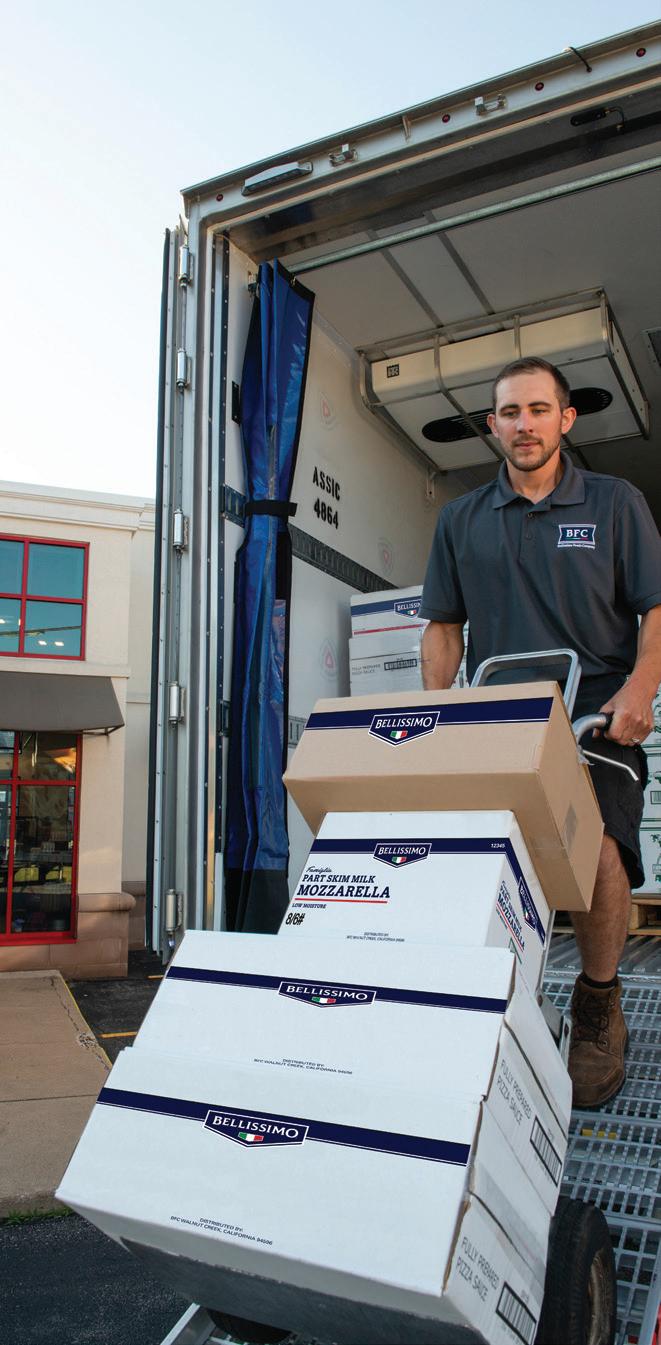
n Benefit from the buying power of a national network
n Work with sales representatives who have superior product knowledge
n Enjoy the best overall customer service
Visit BellissimoFoods.com to find a local Bellissimo distributor and discover the Bellissimo Foods difference in service and product knowledge.




Grande is championing operators who have an independent spirit and shared passion for excellence. By providing the finest all natural, authentic Italian cheeses, along with an unwavering commitment to quality, we’ll continue to advocate for independents and their love of the craft.
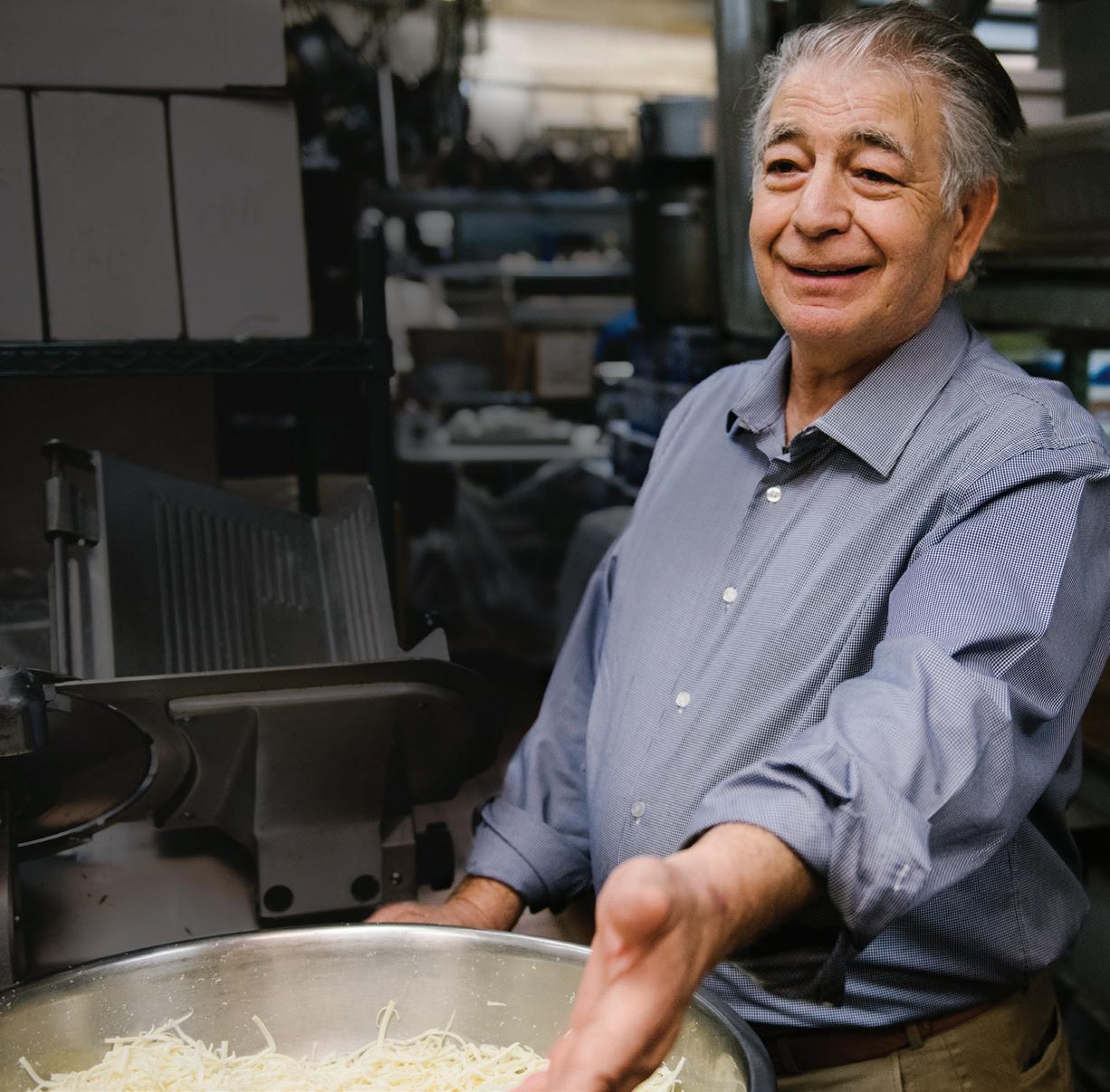
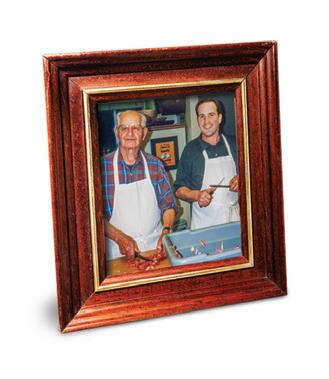
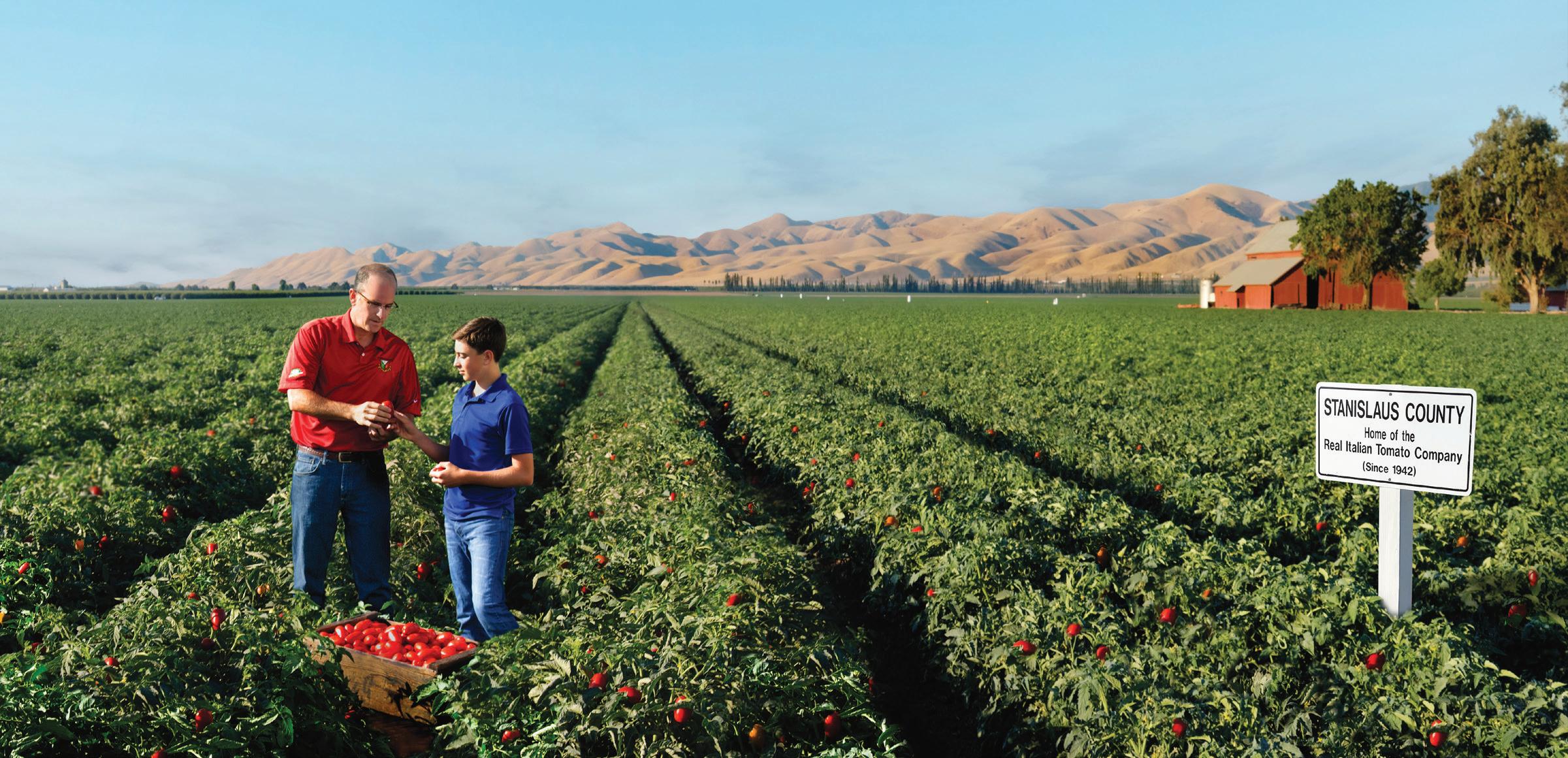




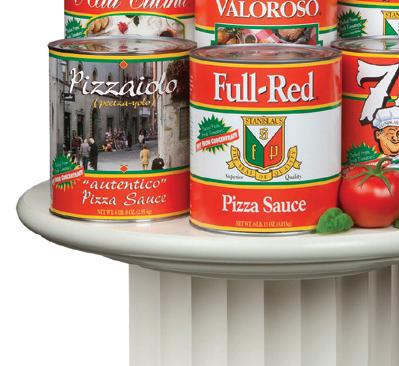



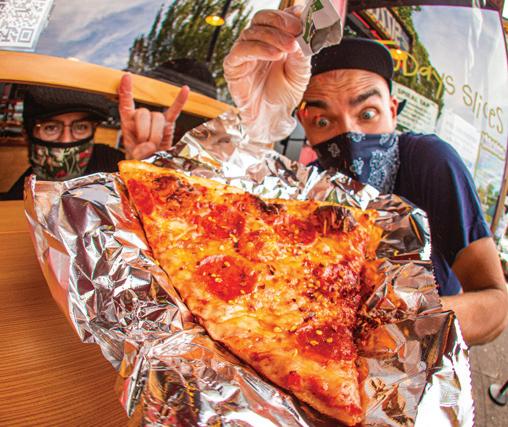
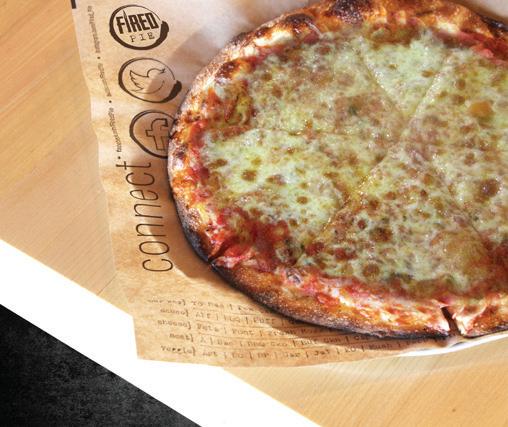
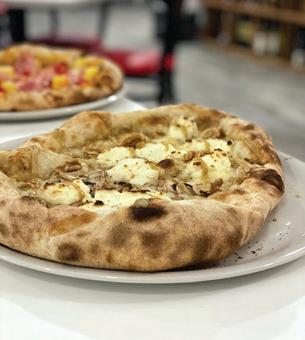
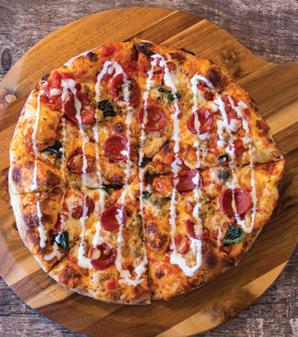
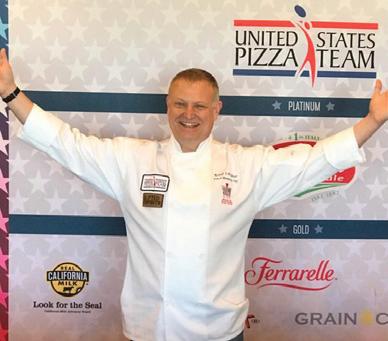
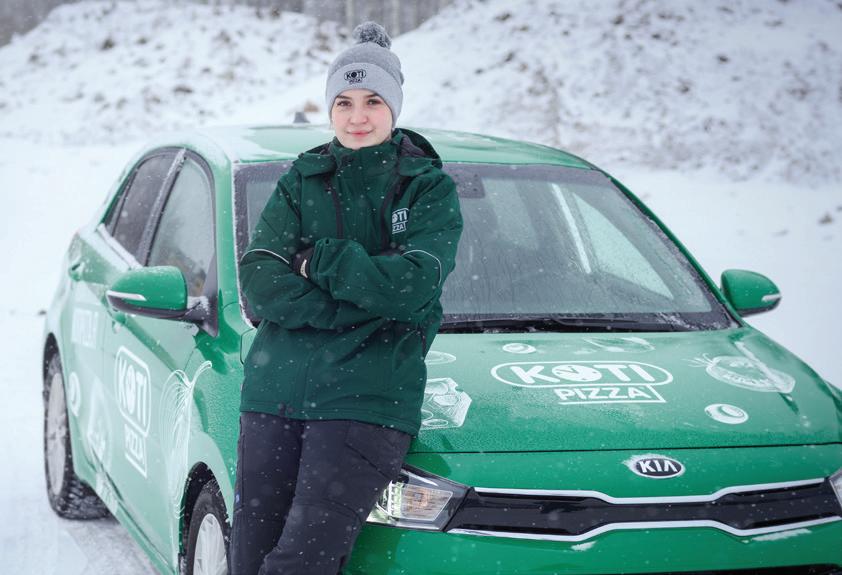
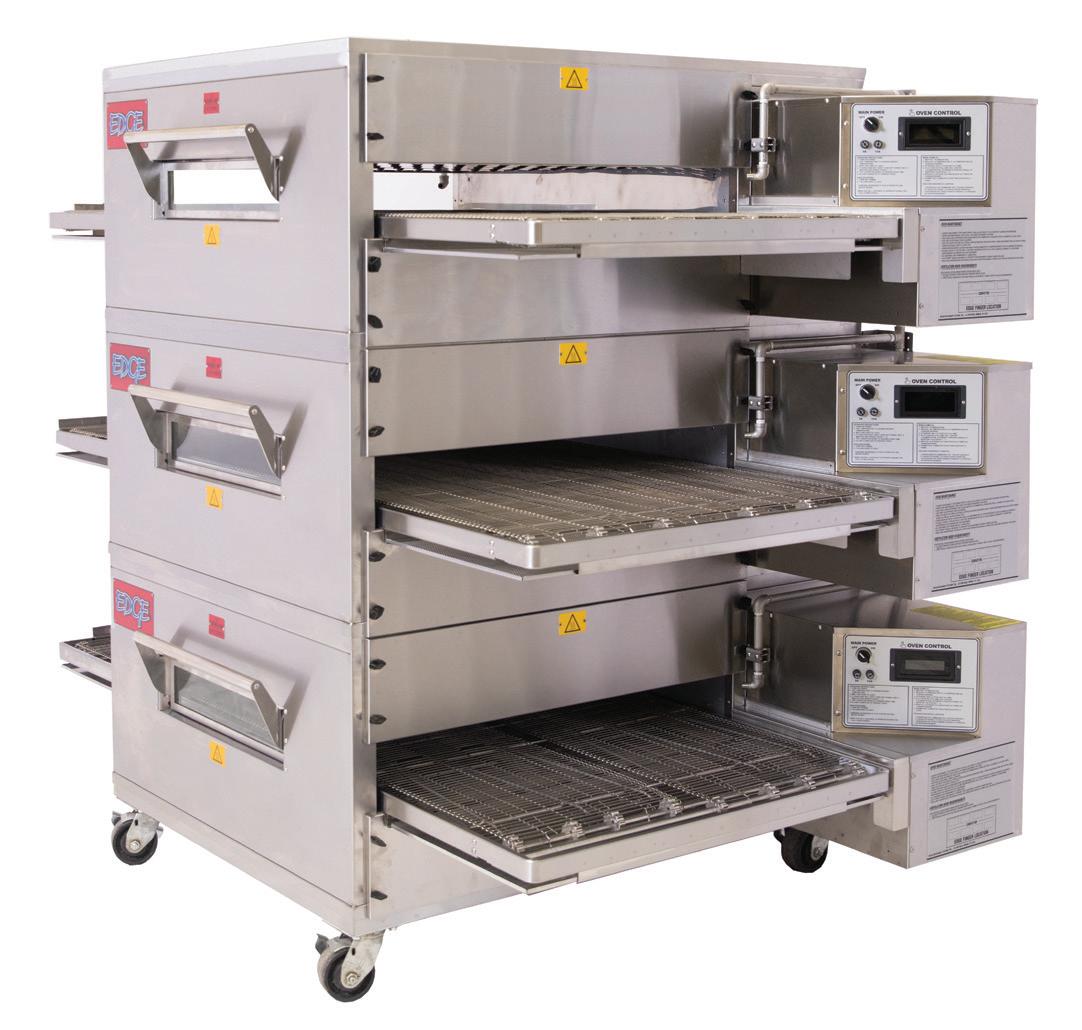


Major New Pizza Industry Event, the Pizza Tomorrow Summit, to Make “Grand Slam” Debut
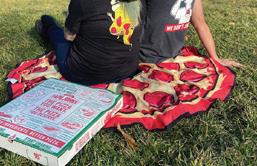
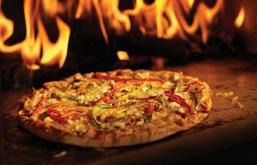
Trade show veterans from Grand Slam Events will produce a full-service, all-inclusive pizza industry event for pizzeria operators next fall.
pmq.com/pizza-tomorrow-summit
Could Liquid Vegan Mozzarella Revolutionize the Pizza Industry?
Miyoko’s Creamery toured several U.S. cities to promote its pourable mozzarella, an alternative to the standard solid block of vegan cheese.
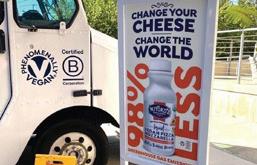
pmq.com/liquid-mozzarella
Pizza Hut Celebrates 25 Years of Stuffed Crust Pizza

If not for the brand’s faith in the idea, the complexity, costs, investment and skepticism may have meant a world without stuffed-crust pies.
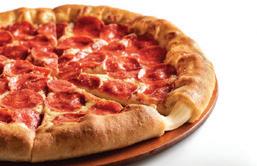
pmq.com/stuffed-crust-pizza-anniversary
Papa John’s Closes Largest U.S. Franchisee Development Deal
Franchisee operator Sun Holdings will oversee the opening of 100 new Papa John’s stores in high-growth markets across Texas by 2029.
pmq.com/papa-johns-sun-holdings
Restaurant
An insurance expert offers his top tips for restaurants looking to better protect their building, employees and patrons against fire hazards.
pmq.com/fire-prevention
Arthur Galea, Founder of G’s Pizzeria, Dies at 96

After his wife passed in 2010, Galea honored her every year with a 400,000-light Christmas display at their home in West Branch Township, Michigan.
pmq.com/arthur-galea/
of PMQ, Inc.
662-234-5481
Volume 25, Issue 9
November 2021
ISSN 1937-5263
PUBLISHER
Steve Green, sg@pmq.com ext. 123
CO-PUBLISHER
Linda Green, linda.pmq@gmail.com ext. 121
EDITOR IN CHIEF
Rick Hynum, rick@pmq.com
ART DIRECTOR
Eric Summers, eric@pmq.com
SENIOR COPY EDITOR
Tracy Morin, tracy@pmq.com
IT DIRECTOR Cory Coward, cory@pmq.com ext. 133
DIRECTOR OF RESEARCH
Blake Harris, blake@pmq.com ext. 136
TEST CHEF/USPT COORDINATOR
Brian Hernandez, brian@pmq.com ext. 129
REPORTER Chris Green, chris@pmq.com
FOOD PHOTOGRAPHER
David Fischer, david@pmq.com
CHIEF FINANCIAL OFFICER
Shawn Brown, shawn@pmq.com
ADVERTISING
SALES DIRECTOR
Linda Green, linda.pmq@gmail.com ext. 121
SENIOR ACCOUNT EXECUTIVE
Tom Boyles, tom@pmq.com ext. 122
SALES ASSISTANT
Brandy Pinion, brandy@pmq.com ext. 127
PMQ INTERNATIONAL
PMQ CHINA Yvonne Liu, yvonne@pmq.com
PMQ RUSSIA
Vladimir Davydov, vladimir@pmq.com
PMQ PIZZA MAGAZINE 605 Edison St. • Oxford, MS 38655 662.234.5481 • 662.234.0665 Fax
PMQ Pizza Magazine (ISSN #1937-5263) is published 10 times per year.
Cost of U.S. subscription is $25 per year. International $35. Periodical postage pricing paid at Oxford, MS. Additional mailing offices at Bolingbrook, IL. Postmaster: Send address changes to: PMQ Pizza Magazine, PO Box 9, Cedar Rapids, IA 52406-9953.
Opinions expressed by the editors and contributing writers are strictly their own, and are not necessarily those of the advertisers. All rights reserved. No portion of PMQ may be reproduced in whole or part without written consent.

Thursday, November 25
Thanksgiving Day
You’ll probably be closed for Thanksgiving Day itself, but you can celebrate the holiday throughout the rest of the week with a Turkey Day-inspired pizza. Don’t forget to create special offers for Friday to give your customers a break from, well, too much turkey.
Sunday, November 28
First Day of Hanukkah
Launch an ongoing eight-day campaign through December 6 to celebrate Hanukkah with latke pizzas, jelly doughnuts from a local Jewish bakery, a pulled brisket pizza or a pull-apart pizza shaped like a menorah!
October 31-November 2
Mid-America Restaurant Expo
Presented by the Ohio Restaurant Association, this annual event goes virtual for 2021. Featuring presentations from industry experts, live programming runs from 10 a.m. to 5 p.m. each day and covers topics like food and beverage trends, tech innovations, business strategies and employee wellness.
Learn more at midamericarestaurantexpo.com
November 10-12
Digital Food & Beverage
Christopher Thomas-Moore, vice president of media, digital marketing and product/menu development for Domino’s, will be a keynote speaker for this ecommerce-focused conference in Austin, Texas. Keith Fagin, vice president of digital for Little Caesars, will also lead a presentation on fulfilling digital orders.
Learn more at foodandbeverage.wbresearch.com
Wednesday, November 3
National Sandwich Day
Don’t miss this opportunity to showcase your best sandwiches with specials and new signature creations. Turn one of your most popular pizzas into an artisan sandwich or make a sandwich that’s big enough for two.
Thursday, November 11
Veterans Day
Celebrate America’s heroes by offering a free large one-topping pizza or a meal deal to veterans and active-duty military personnel. Make sure to shoot photos of your favorite veterans and post them on social media.
2 p.m. (CT), Tuesday, November 16
Virtual U.S. Pizza Cup

Join us for the live reveal of the 2021 Virtual U.S. Pizza Cup results! PMQ’s Brian Hernandez will announce the winner of the $1,500 grand prize, chat with the competitors and get the judges’ thoughts on what makes a pizza championship-worthy.

Join us on Facebook Live!
2 p.m. (CT), Tuesday, December 14
PMQ Live Update: Mark “The Cheese Dude” Todd
Cheesy questions (and jokes) are welcome as PMQ’s Brian Hernandez hosts a chat with Mark “The Cheese Dude” Todd. Mark will answer all of your questions live, with a focus on hard cheeses as both star-of-the-show toppings and garnishes.
Join us on Facebook Live!
Here’s a look at upcoming restaurant and foodservice events you won’t want to miss in November, plus some special food and beverage holidays and PMQ’s latest live interviews with top pizza professionals!

After working at top restaurants in Washington, D.C., and Chapel Hill, North Carolina, Teddy Diggs found himself gravitating toward Romanstyle pizza.

In a move that sparked coverage from local news media, chef Teddy Diggs, owner of Coronato Pizza in Carrboro, North Carolina, has cut all of the booze from his drink menu. Diggs told PMQ he wants to create “an environment that offers and produces the highest energy and best opportunity for our employees’ and our guests’ mental, physical and spiritual health.” Diggs, a Culinary Institute of America alum, opened the Roman-style pizzeria in 2019. He said he doesn’t judge anyone for drinking, but he decided to stop serving alcohol due to its negative effects on the body. It’s also bad for the restaurant’s overall atmosphere, he added, noting, “It has been well-documented, using biofeedback equipment, that alcohol lowers the surrounding environment’s vibrational frequency….Everyone does not consume alcohol, and, because of its addictive nature, it can create challenges and distractions for some of us. So creating an environment that celebrates nonalcoholic beverages and eliminates alcohol means that everyone can fully participate in the same experience without hesitation and issue.” Customers can still quench their thirst with Coronato’s wide range of nonalcoholic seltzer waters, Italian sodas, zero-alcohol cocktails and kombucha.

Pizza lovers in Bristol, England, were sad when the American-style diner Rocotillos closed after nearly 30 years in business, but the pizzeria that has taken over the spot has something to cheer them up: “naughty milkshakes.” Pizza Bianchi opened in September with a menu featuring Neapolitan pies and “hard” milkshakes spiked with booze—specifically, a lot of vodka. Specialties include the Hella Nutella Fella, featuring vodka, Frangelico liqueur and chocolate, and the Big Tiramisu, made with vodka, coffee, Marsala wine and cocoa. Bristol Live said the latter tastes “as good as it sounds—boozy and creamy but not as sweet as feared. It was the grown-up shake dreams are made of.” Customers can also slurp on “naughty slushies,” such as the Negroni Homie, made with gin, Campari liqueur and Cinzano 1757, a small-batch vermouth.
In addition to crackerthin pizzas, Coronato Pizza last year offered castagnole, a traditional Roman Carnevale fried-dough treat, during the North Carolina State Fair.

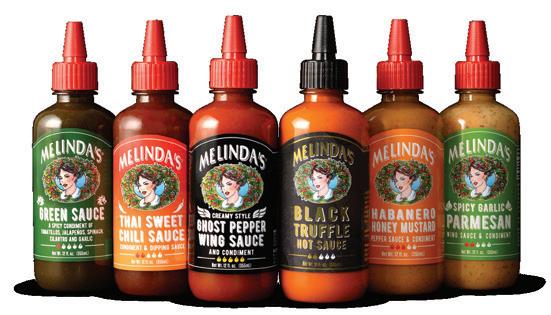
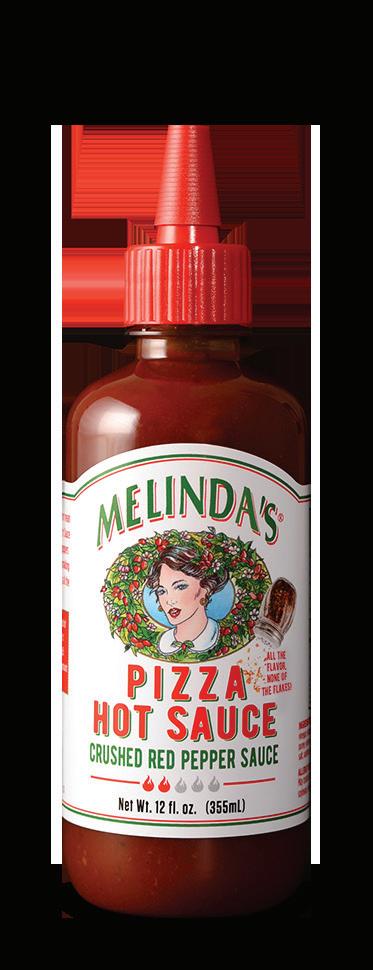

AJ Binning was just 16 when he started working after school and saving every penny he earned. Two years later, he’s the owner of Dough Boys Pizzeria in Clovis, California, which opened on July 30 to considerable media fanfare, due to Binning’s young age. He took over the site of the defunct Clovis Pizza Junction, even serving some of their recipes, and hired kitchen manager Mitch Lee to develop other menu items and fill the air with the smell of pizza and teen spirit. Binning has been featured in The Fresno Bee and The Business Journal, and, at press time, his shop had a four-star rating on Yelp. Catchy pizza names include The Hitman (mozzarella, pepperoni, salami, Canadian bacon, sausage and linguica) and The Alibi (pesto sauce, tomatoes, bell peppers, red onions, artichoke hearts, mushrooms and black olives). Binning’s biggest challenge was finding staff; he presently has a small crew who make between $16 and $20 per hour. He told The Business Journal that his tender age hasn’t caused any problems with his staff. “I honestly feel like we’re all equal, so there’s no, ‘Hey, you’re younger—go wash the dishes.’ It’s none of that.”


She’s a bartender and a metalsmith by trade. He’s a carpenter. But Kristen and Matt Griffin, owners of Fire in the Kitchen, are better known these days for hauling a 7,000-pound wood-burning pizza oven around Connecticut and serving pies like the Pulled Pickle and the Lemon Boy at breweries, vineyards and private events on the weekends. And recent coverage by the Stamford Advocate definitely hasn’t hurt their business. The couple started out making pizzas for themselves with an Ooni oven before upgrading to their current oven and hitting the road for fun and profit. Their rotating menu of signature pies is extensive and full of novel combos—they’re not shy about piling on fruits like peaches and figs, not to mention purple mashed potatoes. The Pulled Pickle features pulled pork, dill pickles, Monterey Jack and cheddar cheeses, barbecue sauce and a ranch finish, while the Lemon Boy is topped with smoked mozzarella, Aleppo pepper flakes, garlic, a drizzle of honey and, yes, lemon slices.






It is said that Lady Justice is blind—her scales swayed only by the evidence at hand, her sword at the ready. But what if she judged by smell and taste? Suddenly her “objective” scales could be weighted in one direction or the other, and her whetted rapier just might serve up slices instead of sentences. Luckily, most of us don’t have to face that kind of judgment—except for pizzaioli, for whom it’s a daily occurrence. Sometimes they even voluntarily place themselves at the mercy of the toughest magistrates of all—their fellow pizza makers—in regional, national or international pizza making competitions. With in-person competitions springing back up around the world, now is the time to make sure you know what judges look for in a perfect pie and how to prepare for different events in different regions.
Rudy Waldner—an author, professor of marketing and dining etiquette in Costa Rica, vintner and U.S. Pizza Team member—is no stranger to sitting in judgment of others’

culinary gifts. With visits to more than 10,000 restaurants and 2,000 bottles of wine in more than 80 countries under his belt (literally), Waldner has judged competitions from wine to wings and from barbecue to pizza. He knows what it takes to make your dish stand out from the competition and tip the scales in your favor. Court is now in session, the Honorable Rudolf J. Waldner presiding!
PMQ: What should competitors think about when creating a competition pie? Regions? Local ingredients? Hometown tastes? Waldner: I’ve watched as everything you mentioned has won and lost in competitions. I’ve seen a terrific pie from a Texasbased entrant that offered a delicious, shredded barbecue-style pizza. It didn’t fly with the judges, most of whom hailed from Italy and were looking for more of a traditional pizza. Flavor and ingredients are huge, but the audience must always be considered. A white clam pizza will likely not win in Arkansas.



PMQ: What do judges look for, besides a delicious slice—exotic ingredients or just the basics?
Waldner: Both. But if you’re using exotic ingredients, you absolutely need to know your audience. Do your research on local and seasonal toppings from the area where you’re competing. Some judges may look for something outside the box, but a majority will have a certain regional palate, and they tend to judge based on that. Always remember, too, that less is more. You want every single ingredient to shine through on its own. You should be able to discern each individual flavor.
PMQ: What are some of your best tips for competitors?
Waldner: Know everything about your pie. There are two styles of judging: blind judging and open judging, where the competitor presents the pizza directly to the judges. In open judging, the judges are typically allowed to ask you questions. You better know all your times and temperatures in dough



production, as well as ingredients and weights. It’s good to know at least one unique fact about all of the ingredients on your pie. And, especially in Italy, the judges will grill you about your dough production process.
Choose slices that have great crumb structure and evenly distributed toppings. Some people like to have all of the flavors in a single bite. That becomes a balancing act, since you could end up with a wall of flavor that’s hard to judge. Others try to have only one or two ingredients in one bite, so each bite is
(Clockwise from left) Rudy Waldner teaches an etiquette workshop; Bruno Brunetti and Lenny Rago of Panino’s Pizza present an entry to judges at the World Pizza Championships in Italy; Daniel Saccone of Saccone’s Pizza presents his pie at the 2019 Northeast U.S. Pizza Cup.“Less is more. You want every single ingredient to shine through on its own. You should be able to discern each individual flavor.”
— RUDY WALDNER
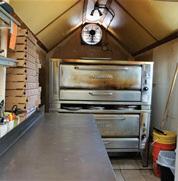
3172 N Riverside Dr., Saukville, Wisconsin 53080
$499,900
Rare and fantastic opportunity to own a successful bar/restaurant with tremendous potential.
The Riverview Inn has been a fixture in Ozaukee County since 1963.


Bar/restaurant comes fully equipped and current owner will help with transition.
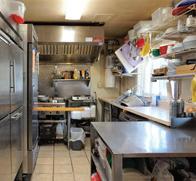


Property includes an outside bar/deck and stage for bands and more.

Adjacent to a 2-diamond baseball field - walking access to restaurant.
Sitting on 2 acres makes room for even more.
A 2-bedroom 1-bath living quarters with separate entrance or us it as a rental for extra income. There is lots of parking with this turn key sale.
For Inquiries, contact Andy Bretl
262-853-0881

different, and each ingredient is pronounced. This is also risky, as judges typically don’t take that many bites. You run the risk of them not getting all the intended flavors before they move on to the next pie. However you present it, make sure it’s the best representation of your flavors in as few bites as possible. And smile! If you don’t have fun, it will be reflected in your final product. After all, it’s pizza—it’s meant to be fun.
PMQ: Do you prefer open or blind judging?
Waldner: Blind judging would seem to be the fairest. But platform skills and presentation are a big part of open judging, and rightfully so. Behind your counter in your shop, you are on stage. You’ve got to get good at exuding enthusiasm and knowledge of your product. It’ll grow your business and help turn your customers into your evangelists.
PMQ: In an open-judging event, where competitors present directly to the judges, what do you expect to hear or see?
Waldner: I believe that, just like an exceptional wine, the story is extremely significant. Let us know about the origins of the ingredients and the inspiration for the recipe. It should be told with enthusiasm, perhaps even revealing a “secret” ingredient or process. Also, take pride in your presentation and appearance. Most competitions will not judge you on the presentation, but if that’s allowed in your event, it goes a
long way subliminally. When the judges see a lavish display platter and a beautiful pizza, they get the sense of the love and care you have for that product. They feel your pride. And I’m sure it does sway a half a point or two from certain judges. Appearance is important: Dress to impress. This will set you apart from other entrants—no shorts or T-shirts. Wear a chef coat with chef pants. Have a towel or apron to keep yourself clean before presenting to the judges.
In competitions like the World Pizza Championship in Parma, Italy, they have oven judges. They judge you on your prowess in making the pizza. They have points for cleanliness, skill and proficiency with your dough, peels and the ovens. They will mark you down for wearing shorts, watches and even wedding rings. Most competitions are not that strict, but you should go into every event thinking it will be.



PMQ: Any other tips?
Waldner: Practice, practice, practice. Don’t just practice making your “pride and joy” pizza, but practice presenting it as well. Write down the words that you want the judges to hear and practice your lines until you can say them in your sleep. I can’t tell you how many times a few points were left out in a presentation, points that could have made a significant difference in the final scoring, depending on the judge.
Read more on PMQ.com!
For Rudy Waldner’s additional thoughts on thinking like a judge, check out the full interview at PMQ.com/waldner-judging.
Brian Hernandez is PMQ’s test chef and coordinator of the U.S. Pizza Team. Waldner judges the 2019 West Coast U.S. Pizza Cup.“Just like an exceptional wine, the story is extremely significant. Let us know about the origins of the ingredients and the inspiration for the recipe.”
— RUDY WALDNERSaccone’s Pizza submits a pie in the 2019 Northeast U.S. Pizza Cup.
INGREDIENTS:
48-hour-aged dough, stretched out to 12”
2 oz. sauce
6 oz. Galbani® Premio Mozzarella/Provolone
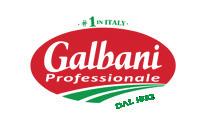
Tigrato® Cut Shreds
8 basil leaves
12 slices thick-cut pepperoni
3 oz. Italian sausage
2 oz. honey cream cheese sauce
Pinch of red pepper flakes
1 oz. Galbani® Parmesan, grated
For the honey cream cheese sauce, mix 6 c. of cream cheese, 8 c. of heavy cream, 1 c. of honey, and 1 tsp. of salt. Whisk well and place in a squeeze bottle.
Sponsored by:
DIRECTIONS:
Sauce and top the pizza with cheese, basil, pepperoni and sausage. Bake for 7 minutes in a wood-fired oven at 625°. Remove from oven and place on a screen for 4 minutes to release built-up steam. Finish with drizzle of honey cream cheese sauce, red pepper flakes and Parmesan.

The award-winning Northwest Traditional is much more than a standard pepperoniand-sausage pizza, according to its creators at Farrelli’s Pizza, which has multiple locations in Washington State. “For the crust, we took our housemade dough and added an 18-hour room-temperature fermentation,” a company statement reads. “This extra step gave us a lighter, crispier crust with some big fermentation flavor. We also added two extra hours of proofing time. Galbani Premio Mozzarella gives the pizza a very smooth and creamy texture, while Galbani Provolone adds a very sharp cheese flavor, and the freshly grated Galbani Parmesan lends a nutty, salty component. Some people might think this is a simple two-topping pepperoni-and-sausage pizza, but, to us, it is a recipe that shows our growth over 20 years and our commitment to quality and continuous improvement.”





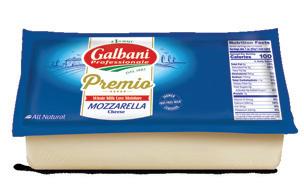

From world-renowned to under-the-radar, these pizza styles have made their mark on an ever-evolving food category.
 BY TRACY MORIN
BY TRACY MORIN
There’s an old adage in boxing: Styles make fights. But this phrase can apply to the ranks of pizza aficionados, too. How often have you heard someone vigorously defend the pie style they grew up with, proclaiming it “the best” and unwilling to entertain any argument to the contrary?
Of course, we at PMQ aren’t here to take sides. We love all passionate pizza lovers—including every pizzeria operator who is sure that his or her pizza is “the best.” We also embrace an unwavering appreciation for pizza in every name, shape and form, from char-speckled Neapolitan and Chicago stuffed to oversize New York slices and gourmet-topping California creations.
Though there are enough styles around the world to fill encyclopedia-size tomes, we’ve selected just a few for this roundup—a way to celebrate pizza in just some of its many beautiful expressions.
Beloved from coast to coast—and, in some cases, legendary the world over—these pizza regions and their styles have cemented their stamp on the development and popularity of Americans’ favorite food.




For many consumers, New York-style pies are a sort of American gold standard. And that association somewhat makes sense, as so many Italian immigrants seeking to recreate their fortunes in the New World flooded in through Ellis Island and settled throughout New York City. Naturally, they brought some traditions from home with them—including pizza. Today’s New York City actually serves up tons of styles, from coal-fired pies crackled with char at one of Little Italy’s original landmarks, Lombardi’s, to thick-crust grandma pies served in squares. But when most people think of the New York-style pie, they think large, foldable slices; dough made with high-gluten flour; and low-moisture mozzarella in generous doses. This bona fide Big Apple legend can now be found in pizzerias around the world.
 METRO PIZZA
METRO PIZZA
Because if your phones and web ordering are down, you may as well send everyone home. We become your phone company and provide a backup Internet connection

Increase revenue and lower cost
• No Busy Signals
• Call Recording
• Call Queuing / Auto-Answering
• Multiple (random) start-of-call upsell messages




• On-hold music/message loops
• Detailed reports—hold times, lost calls etc
• Callerid delivered to POS system
• Auto-attendants—”If you have arrived for curbside pickup press one”
• When your Internet fails our cellular backup router keeps your phones, credit card processing and web orders all working.
• The backup kicks in automatically in seconds. So quickly you will not even drop calls in progress when your primary Internet goes down!
• The same router can be used to create chainwide virtual private network to connect your locations.
• SD-WAN LTE/LTE-A (4G/5G) modems.
Ask us how we can make your life easier and improve your customer ’s experience during these difficult times. Our rapid response support team averaged almost 500 custom changes per week in April-June. As “the rules” changed for our clients, we updated messaging and call flow to minimize impact, maximize revenue. Let PizzaCloud do the same for your stores.
Maintain control, and get the calls off the front counters. For a small chain all you need is a large office at one location. Cut labor hours up to 50% and/or shift labor to lower cost regions while increasing average ticket . Eliminate the constantly ringing phones at the front counters! Tight integration allows calls to overflow to stores, so you can choose when to staff the call center.
The same tight integration, same detailed reports and call recordings in your hands, same ability to overflow back to the stores, but you let some one else hire and manage the staff. We can provide this service to you or work with your existing call center provider.
If you have any interest in call centers call us to discuss options or visit www.pizzacloud.net to register for a webinar.


The Windy City is known for its deep-dish pies, often a must-try for tourists visiting iconic spots like the original Pizzeria Uno—home of the original deep-dish, created by then-owner Ike Sewell in the 1940s. But many Chicago natives cling to (and grew up with) the thin-crust version of Chicago pies, which are cut into squares and churned out to crispy perfection by no-nonsense outlets like the iconic Vito & Nick’s Pizzeria on the city’s South Side. Then there’s stuffed pizza, a creation claimed by Nancy’s Pizzeria, which crafts pies that are 2.5” thick, with toppings and cheese sandwiched between two layers of crust—a take on an Italian Easter pie tradition that, fittingly, has been stuffing Chicagoans and visitors alike since the early ’70s.

The Motor City gave us legends from the modern assembly line to Motown music, but the Detroit-style pizza is one of its greatest contributions. Pioneered in the 1940s at Buddy’s Rendezvous Pizza, a light, airy dough was placed into rectangular blue steel pans (a staple of the city’s automobile industry), and toppings were applied “backward”: first pepperoni, then cheese and sauce. The well-greased pans and to-the-edge cheese application (traditionally the Wisconsin brick variety) create caramelized, crunchy corners that are utterly irresistible. Since its unveiling decades ago, the Detroit pie has spawned many operations in the region over the years, but the style also became one of the trendiest in the late 2010s, popping up in pizzerias around the country.

In the aughts, this style made a ferocious resurgence around the United States, with new-school examples cropping up from coast to coast. Chefs like Roberto Caporuscio at New York’s Kesté Pizza & Vino and Jonathan Goldsmith at Chicago’s Spacca Napoli Pizzeria lovingly recreated the labor-intensive style that Naples-born pizzaioli had perfected over hundreds of years. Today, organizations like the Associazione Verace Pizza Napoletana (VPN) and the Associazione Pizzaiuoli Napoletani (APN) oversee certifications for authentic Neapolitan ingredients and processes, like quick cooking in a wood-fired oven running at about 900°, kneading dough with hands or an approved mixer, fermenting at least eight hours, and all-natural toppings. The resulting pizza, according to the VPN, should be “round, with a diameter no greater than 35 centimeters,” with a “puffed up” crust and a thin center (maximum 4 millimeters thick).
 AURELIO’S
AMY KRIZANEK, CLOVERLEAF PIZZA
AURELIO’S
AMY KRIZANEK, CLOVERLEAF PIZZA
PMQ solicited opinions on favorite pizza styles from operators and consumers alike—and what makes them great. Here’s a roundup of some regional fan favorites.



Reza Kamalian, director of operations for Pizza Guys, oversees a Sacramento-based franchise concept with 70 locations throughout California and Oregon, so it’s no surprise he gravitates toward the West Coast style. “A California-style pizza is a thin-crust pizza, usually topped with locally sourced, sustainably grown ingredients,” Kamalian says. “These pizzas
tend to contain more healthy, fresh and organic ingredients than traditional pizza styles, like artichoke hearts, avocado and figs, or leafy greens like arugula, baby spinach, kale and basil. California-style pizza embraces creativity by pizza makers and allows them to think outside of the box when creating new pizzas for their customers to enjoy.”

Dwight Zahringer, president of Pure Cabo in Cabo San Lucas, Mexico, often connects visitors with local dining outposts, and he wants to put a little-known style in the ring of up-andcomers. “If you’re looking for an offbeat, diverse pizza style that’s making its way into U.S. mainstream dining, look no further than tlayudas,” Zahringer asserts. “Tlayudas are a beloved Mexican street food from the Oaxaca region that hit the mainstream after being voted Latin America’s best street food in a Netflix-sponsored online contest, hosted in early 2020.” This style—already on the radar in the Southwest, especially in Los Angeles and San Diego—is now being served as far away as Chicago. “Tlayudas are made from a masa-based dough that’s flattened, then baked or fried until it’s almost identical to an Italian pizza dough,” Zahringer says. “Refried beans are smeared on as a ‘sauce’ base, followed by Oaxaca cheese. Common toppings include chorizo, tasajo (cured beef), pork asada, mushrooms, onions and peppers galore, then finally cabbage and salsa.”
Roman-style pizza has picked up steam in the United States over the last few years, leading to the establishment of centers like the Roman Pizza Academy in Miami, which offers courses in creating Roman styles like Pizza al Taglio, Pizza alla Pala and Pinsa. Ingredient guidelines include 00 flour, tomato passata for the sauce (without any additions, like basil), and “slightly aged, premium, whole-milk loaf mozzarella,” with cheeses like fior di latte and buffalo mozzarella as other options after a prebake process. “Roman taglio pizza is distinguished by its light, airy, honeycomb, cavernous crust, with a slightly crunchy yet chewy texture,” explains chef Avni Latifi, who is certified in Roman pizza, and co-owner of Harry’s Prohibition Bistro and owner of Harry’s Diner in Sheboygan, Wisconsin. “The special dough rests and ferments for up to 96 hours prior to baking, is cooked three times, and is served as rectangular slices ‘by the cut,’ using a specific style of kitchen scissors. Roman Pinsa is a ‘cloud’ of pizza, with a delightful, crispy texture on the outside and an incredibly soft, tasty inside.”

“Tlayudas are made from a masa-based dough that’s flattened, then baked or fried until it’s almost identical to an Italian pizza dough.”
— DWIGHT ZAHRINGER, PURE CABO



















It might not get as much press as its neighbor, the New Yorkstyle pie, but don’t be fooled: Many a pizza lover places this Connecticut staple at the very top of the American pizza style list. Caleb Chen, who regularly seeks out food to feature on his website, The Highest Critic, fell in love with New Haven apizza on a recent road trip—and is already planning more returns (all the way from the West Coast) just to eat his new favorite. “I truly believe that New Haven apizza deserves its spot as the No. 1 pizza in America,” Chen says. “The defining characteristics are a longer cold fermentation for the dough, resulting in a chewier crust, which is also thinner than many other pizzas and more charred. And many people who try apizza will remember the toppings: White clam pizza and tomato pie aren’t classics everywhere in the country, but they should be!”
 Tracy Morin is PMQ’s senior copy editor and the editor of PizzaVegan.com.
Tracy Morin is PMQ’s senior copy editor and the editor of PizzaVegan.com.
“White clam pizza and tomato pie aren’t classics everywhere in the country, but they should be!”
— CALEB CHEN, THE HIGHEST CRITIC




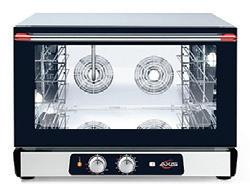



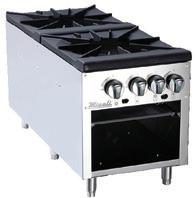
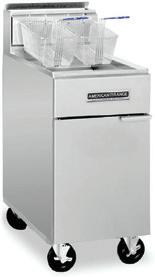








uses dynamic pricing to maximize delivery sales and boost its franchisees’ profits.
BY RICK HYNUMFor many Americans these days, “algorithm” is a troubling word—although they might not know exactly what it means. It sounds a little mysterious, even esoteric. Disinformation on social media quickly springs to mind, as does online privacy— or lack thereof. But pizza makers have been using algorithms all their lives, whether they realize it or not. Simply put, an algorithm is a sequence of instructions for performing a task. Your dough formula is essentially an algorithm. So is your grandmother’s recipe for lasagna.
Facebook, Twitter and Amazon built their success on more complex computer-based algorithms, and major pizza chains like Domino’s have put them to profitable use as well. But no one in the pizza industry uses algorithms quite like Kotipizza, the No. 1 pizza chain in Finland.

Founded by Rabbe Grönblom in 1987, Kotipizza grew into the first national franchising pizza chain in Finland. The company now has 294 franchisee-operated units in every part of the country, according to Johanna Kuosmanen, the company’s digital and customer experience director. From Lapland to Helsinki, Kotipizza has become a household name, she notes, with a brand recognition of 99%. Kotipizza’s sales totaled €151.4 million ($174 million in U.S. dollars) in 2020, but they’ve continued to grow in 2021—in July, monthly sales topped €15 million ($17.3 million) for the first time.
As with many American pizza chains, digital ordering and technology have been crucial to the chain’s growth over the past two decades. What sets Kotipizza apart from Domino’s, though, is how the company uses a specialized algorithm to set its delivery fees—and to keep resetting them all day long—in a model called dynamic pricing. Kotipizza is the first European pizza company to use dynamic pricing specifically for home delivery, letting demand drive the price. And what they’ve learned over the past two years could change the pizza industry worldwide.
Dynamic pricing is hardly a recent innovation. Airlines and hotels have been using it for decades to set prices for flights and rooms. A plane ticket to Seattle might cost you less if you order it today and more if you wait until next week. Hotels charge more on weekends than on weekdays. The same idea applies with Kotipizza’s dynamic pricing algorithm. “It means that the price of pizza delivery is determined by demand,” Kuosmanen explains. “The price is lower when the demand is lower and vice versa. In practice, the price of delivery fluctuates between €2.90 ($3.35) and €7.90 ($9.13).”
Kotipizza partnered with tech company Priceff, co-founded by Anders Ekholm, to solve a problem that’s common to
“[Dynamic pricing] means that the price of pizza delivery is determined by demand. The price is lower when the demand is lower and vice versa. In practice, the price of delivery fluctuates between € 2.90 ($3.35) and € 7.90 ($9.13).”
— JOHANNA KUOSMANEN, KOTIPIZZAKotipizza’s team delivers pizzas in heavily branded, hard-to-miss delivery vehicles.


pizzerias everywhere. “The demand for pizza is very high between Friday and Sunday, whereas the beginning of the week is very slow, and, from our experience, no amount of campaigning can boost it very much,” Kuosmanen says. “We wanted to find a way to boost demand during the slow period early in the week, and Priceff’s model offered a unique way to do that.”
Inspired by fluctuating prices for plane tickets and flaws in the airlines’ model, Ekholm developed an algorithm that doesn’t need to predict demand—it’s based on current demand itself. He applied for a patent in the U.S. in 2010, launched Priceff in 2016 and received approval on his patent in 2017. Kotipizza was one of Priceff’s early adopters.
So how does dynamic pricing for pizza delivery work? First, customers can take advantage of dynamic pricing only by placing an order digitally. As determined by Priceff’s algorithm, the delivery fee for the order changes at five-minute intervals based on demand. If only a few people are ordering at a particular time, the fee for delivery drops a bit. On slow days, typically Monday through Wednesday, the fee is considerably lower, and it climbs higher on peak days, during the latter part of the week.

Kotipizza’s actual menu prices stay the same, as Kuosmanen points out. It’s only the delivery fee that changes, depending on the day and even the time of the day. That means customers looking for a better deal on, say, Tuesday night can keep an eye on the fluctuating fee and try to order at the perfect time to save the most money.
Not surprisingly, Kotipizza’s algorithm needed a little tweaking at first, Kuosmanen says. “We ran the first nationwide pilot in May 2019, and that taught us that the process has to be more sensitive to local demand….It has been very much a learning process.”

The problem, she says, was that the delivery price in the early pilot stage “was determined by overall demand in the whole country. But that didn’t work, since demand can vary quite differently in different parts of the country or even in different parts of one town, and the algorithm needed to be tweaked and made more sensitive to location. We had to find the right balance so that the price reacts to actual demand in the place where the restaurant and the customer are located.”
 Kotipizza offers both meat-topped pizzas and vegan/vegetarian options as well as swag promoting “seitan worship.”
Kotipizza’s delivery fees fluctuate throughout the day, depending on customer demand.
Kotipizza offers both meat-topped pizzas and vegan/vegetarian options as well as swag promoting “seitan worship.”
Kotipizza’s delivery fees fluctuate throughout the day, depending on customer demand.
After that first pilot test, franchisees “weren’t too happy with it,” Kuosmanen says. But Kotipizza kept trying. “It was important to find the right model and convince the franchisees of its benefits. So it was also a question of internal communications and marketing.”
Fortunately, the next pilot, executed in 10 Kotipizza restaurants in 2019, was “considerably more successful,” she says. “In September 2020, the model was adopted by all 60 restaurants offering delivery in southern Finland, and currently it runs in 75 restaurants. By November, all 200 delivering restaurants throughout the country will be using it.”




In theory, dynamic pricing decreases demand variation—in other words, it reduces the difference in delivery demand between peak hours and quiet times. It works in practice, too, Kuosmanen says. “It has done exactly what it set out to do: boost sales during the slow period early in the week. In the southern part of Finland, there has been a growth of 21% in units delivered and 20% in delivery sales.”
Dynamic pricing improves the overall delivery experience, too. “Another concrete customer benefit is the fact that dynamic pricing has raised the availability of delivery and lowered delivery times during peak hours,” Kuosmanen notes. “And there is also a segment of customers who are very engaged with the model and like to play around with it.” After all, if a customer wants to score the best possible delivery deal from Kotipizza, they need to keep a close eye on the app and the fluctuating fee. That vigilance helps forge a unique bond between the customer and the brand—they’re more likely to think about ordering from Kotipizza first, because not only can they place a delivery order for less money at

EVERY TIME


Whether fresh for delivery or reheated later, pizzas featuring Saputo® Premium Gold Ricotta Cheese and Mozzarella always hold up.












“We have been able to create traffic in the quiet hours, but we’ve also been able to get the maximum price in the peak hours.”
— TOMMI TERVANEN, KOTIPIZZA
 Kotipizza honored the Finnish men’s football team this summer with the Huuhkana pizza, which featured Hotti sauce, cheese, chicken and fresh arugula.
Kotipizza honored the Finnish men’s football team this summer with the Huuhkana pizza, which featured Hotti sauce, cheese, chicken and fresh arugula.
certain times of the day or week, the digital-ordering process also turns into a fun game. “The model builds brand engagement and loyalty as well,” Kuosmanen says.







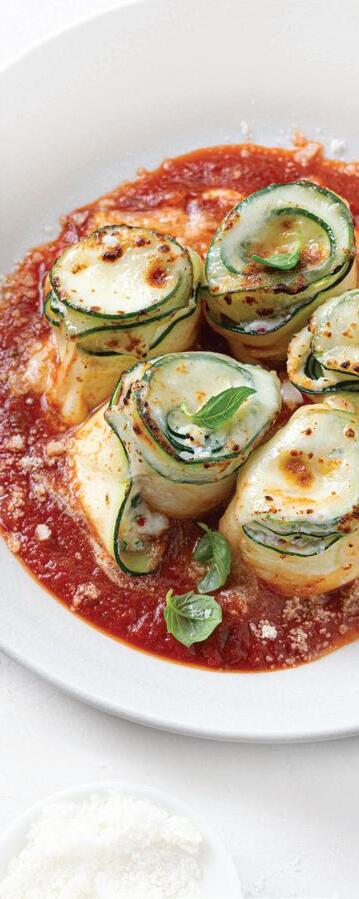
Alexander MacKay, an assistant professor at Harvard University Business School, researches the economics of competition, including pricing, demand and market structure. In a recent webinar hosted by Priceff, he described dynamic pricing as “a really exciting space.” He added, “I absolutely believe that dynamic pricing—sort of smart pricing, more generally—is going to really have an important impact on the way that people do business.”

MacKay noted that various retailers already use third-party pricing software. “For $80 a month, you can get prices that update every hour,” he said. “For $250 a month, you can upgrade your frequency to get instant repricing. So there’s a cost-benefit analysis here. What am I gaining from faster pricing? Is it worth the additional [$170] a month? In addition to pricing frequency…you get to pick what pricing rule you want to set, and you can track what your competitors are doing and adjust your prices accordingly.”



But dynamic pricing hasn’t exactly taken off in the restaurant industry so far. A few restaurants in the U.S. and Europe have tinkered around with dynamic pricing for their menus in recent years, reducing food prices during slow periods for dine-in customers. For example, after pivoting to carryout in the early phase of the COVID19 pandemic last year, Restaurant Olivia, a pasta-focused Italian trattoria in Denver, reopened its dining room in June 2020 with a limited dynamic-pricing model. The restaurant started offering the same fixed-price menu (for four-course and six-






“Another concrete customer benefit is the fact that dynamic pricing has raised the availability of delivery and lowered delivery times during peak hours.”
— JOHANNA KUOSMANEN, KOTIPIZZA
course meals) at a lower price at 5 p.m. and 9 p.m. on weekdays, compared to 7 p.m. on weekdays or on weekends. Four months later, however, Restaurant Olivia co-owner Austin Carson admitted to the Denver Business Journal that the dynamic-price approach wasn’t making a difference in customer behavior and needed more tweaking. As of now, the restaurant’s menu features only a single price—$115—for a four-course meal, regardless of the hour or day of the week.
But, as that $115 figure suggests, Restaurant Olivia is an elegant, upscale operation. Many of its customers are likely not price-conscious bargain hunters. Pizza delivery is a different world, and executives at Kotipizza know it. In fact, they plan to give dynamic menu pricing a try in the future. “We are already looking into that,” Kuosmanen says. “The process will be very similar—and hopefully easier since we’ve already learned so much. We’ll start with local pilots and take the model nationwide gradually.”
To educate its customers about dynamic pricing, Kotipizza ran campaigns on social media and its online store every time the model was introduced in a new region. “The model didn’t need much explaining, since most consumers are already familiar with dynamic pricing and have encountered it while booking flights or hotel rooms,” Kuosmanen says. “In our messaging, we emphasized the fact that the model gives the customer more freedom of choice: ‘You get to decide how much delivery costs.’”
The strategy paid off for Kotipizza during the pandemic, which hit Finland just as hard as the rest of the world. “Overall, restaurant sales in Finland were down by 25% in 2020,” Kuosmanen says. “However, the damage was spread very unevenly, and some restaurants managed to do well, especially ones that had invested in their own online stores and in-house delivery systems and were


“I absolutely believe that dynamic pricing…is going to really have an important impact on the way that people do business.”
— ALEXANDER MACKAY, HARVARD BUSINESS SCHOOLCustomers at Kotipizza scan the digital menu before placing an order. A delivery driver removes pies from a heat box in the trunk of the car.
not dependent on outside delivery platforms. Kotipizza’s chain sales were up 13.6% in 2020, thanks to the online store and delivery. The share of online sales quickly jumped from less than 20% before the pandemic to around 50% and continue to rise to this day….[Dynamic pricing] has been a major part of our success during the pandemic.”



In the Priceff webinar, Kotipizza chairman of the board Tommi Tervanen said experimenting with new ideas is essential to success in the pizza industry. “I believe strongly that two touch points will be the winning formula in the future: the experience you get, first, on the mobile app, and, second, when your doorbell is ringing and the pizza gets handed to you. Those are really big quality issues.”










Through dynamic pricing for delivery, Tervanen adds, “We have been able to create traffic in the quiet hours, but we’ve also been able to get the maximum price in the peak hours. The restaurant business is quite a lot from Friday through Sunday, and Monday through Thursday are the quiet days. So [dynamic pricing] kind of evens out our demand, increases frequency and really drives up the average ticket. That’s the key when working with your franchisees, so that their [delivery strategy] and profitability are great all the time.”



Kuosmanen says Kotipizza aims to be “even more data-driven” in the future. “We continue to optimize the delivery price even more according to demand and location. Regional differences in prices can be made to fluctuate even more. The pricing model can also have more tactical uses. Instead of ‘free delivery’ campaigns, we can just make the dynamic delivery price start from zero. Not to mention all of the possibilities the dynamic pricing model has when it comes to menu items.”

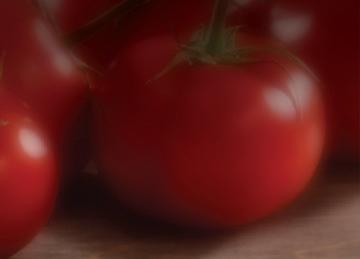



















Mark “The Cheese Dude” Todd offers 8 tips for getting more impact—and profitability—from your cheese inventory.
BY TRACY MORINMost pizzerias stock mozzarella, the gold standard for irresistible slices and pies. But beyond that, which cheeses offer the most bang for their buck—and attract the most customer interest? Which varieties will work the hardest across the menu, shape-shifting to earn the title of “most versatile”? Where does an operator start when there’s a seemingly endless array of cheeses out there?
Mark “The Cheese Dude” Todd, who handles cheese education and promotion from his base in Monte Rio, California, has got you covered with a complete plan of attack.


Football is back! It didn’t “feel right” last year with mostly empty stadiums. Now, people are tailgating, eating out before games and throwing parties at home again! Football = Pizza!
Online ordering and apps have become normalized. In the U.S., “food apps”—such as Uber Eats, Grubhub, DoorDash and Domino’s— were downloaded more often than Facebook over the past two years. To grow long-term, you MUST offer online ordering.
As it gets darker and colder, watch Americans revert QUICKLY back to delivery. Raise your prices—DON’T discount—and deliver in a larger radius!
National chains are tightening menus, with fewer offerings, higher price points, higher quality, better packaging, and a stronger focus on curbside, carryout and delivery.

Make the carryout/curbside/delivery “ambiance” as amazing as possible. Get ready—it’s going to explode!
To learn more about Perfect Crust’s pizza liners and other products, visit perfectcrust.com or email Eric Bam at Eric@perfectcrust.com

A Boston native now living in Tulsa, OK, Eric Bam is VP of sales and marketing for Perfect Crust, with 20 years of experience in the foodservice industry. A powerful force in the workplace, Bam uses his positive attitude and tireless energy to encourage others to work hard and succeed. He has three children and loves helping the men and women of the pizza industry grow their businesses.
STEP 1: NAIL THE MOZZ FACTOR.
“The first tip I tell everyone: The most important thing is the base cheese you use,” Todd says. “Make sure it’s not just 100% mozzarella—if it is, you’re missing out. You should be using a blend of some sort as your base cheese for the best performance. A partskim and whole-milk blend at a 75-25 or 80-20 ratio will give you optimal browning, good melt and flow—and a good price point— so start from there to see what you can add.” Starting with a solid base blend will help ensure that any additional cheeses you carry will truly shine on your pizzas.
STEP 2: REVIEW YOUR STOCK.
Look at what cheeses you already have in-house. “You might have cheeses like blue, feta, fresh mozzarella or Parmesan for salads—so you can look at offering those on pizzas as well,” Todd says. “Use what’s already on hand and think of how you can use them to create great signature pies, like feta on a Greek-style pie. Building pies around the cheeses that are already in your store also helps to create faster turnover, keeping ingredients fresher.”
STEP 3: DETERMINE YOUR ADDITIONAL NEEDS.
Once you’re ready to diversify your cheese offerings, ask yourself a key question: What are you hoping to achieve? “Are you looking for texture, flavor, aroma—what are you looking to get out of that new cheese?” Todd asks. “If you want to pump up aroma, smoked
Looking for cheese that can perform double-duty? Try something like a flavored Jack—these cheeses can be pepped up with everything from herbs (think rosemary, basil or chive) to peppers (from hot habaneros to sweet bell). You’ll get a burst of flavor from both the cheese itself and its mix-ins, in addition to this variety’s renowned melting properties.
“The most important thing is the base cheese you use. Make sure it’s not just 100% mozzarella—if it is, you’re missing out.”
— MARK “THE CHEESE DUDE” TODD


cheeses give a huge aromatic impact (as well as flavor) with just a small amount used. Blue cheese also gives a great aroma, and even washed-rind or ‘stinky’ cheeses in small amounts add earthy aromas, which make people hungry.”
On the other hand, if you’re looking to inject maximum flavor to pies or other menu items, Todd recommends reaching for pepper Jack, aged cheeses like cheddar, and mountain cheeses (also called Alpine-style). These will add aroma, too— but their flavor payoffs are their biggest selling point.
Finally, if you’re looking to add texture, go back to Step 1 and examine your base. “When doing a blend that uses part-skim mozzarella as the primary ingredient, you’ll want to experiment with using whole-milk cheeses as additions—like provolone or Monterey Jack, which are great melters,” Todd suggests. “Part-skim offers great browning and a stretchy texture, but whole-milk cheeses add more melt and flow to cover the pizza completely.”
Another way to make cheeses stand out across your menu: Find producers in your region or state. “Partnering with makers of artisan cheeses helps add local flavor and flair to pizzas, allowing you to highlight a taste of your state,” Todd notes. “Often, you’ll also get support from these types of cheese makers, like a better deal on the cheese, or they’ll allow you (or pay you) to put their name on your menu and feature them.” And, since no one knows their cheeses better, they can help you with pairing recommendations—whether you’re seeking complementary food ingredients for a specialty pie, or wine and beer pairing recommendations to put on your menu or to educate your servers.
STEP 5: SEEK ETHNIC INSPIRATION.
Is there a well-established ethnic population in your area? If so, why not tap their recipes for some inspiration when building your next best sellers? “Maybe your neighborhood has a lot of folks from East Africa—find out what they like to eat in that area of the world and put it on a pizza!” Todd says. “Local ethnic foods and populations can give you clues to develop specialty pizzas, and cheeses can help you do that.” For example, you can find cheeses with spice blends such as harissa, which are popular in north Africa. And, of course, if you don’t
live near an ethnic population, get thee to Google! Research some ethnic dishes online for ideas, and keep in mind how cheeses can help you achieve your desired flavor combinations.
STEP 6: SEEK EXPERT HELP.
When you’re looking for information on cheeses, go to the source—that is, the people who live and breathe dairy, such as state milk marketing boards. (For a list of expert resources from around the country, see the sidebar below.) “They’ll break down cheeses as far as functionality, so you can look for the cheeses available for the attributes you’re seeking—like if
A resource from the U.S. Dairy Export Council, thinkusadairy.org lets you search for suppliers for dozens of cheeses, plus recipes and ideas for foodservice operators, trends, info on sustainability and more.
Dairy Farmers of Wisconsin catalogs mouthwatering recipes and images at wisconsincheese.com, as well as pairing notes, introductions to the state’s cheese makers, and even an online magazine.
The California Milk Advisory Board promotes the Golden State’s wide array of cheeses via realcaliforniamilk. com, including inside looks at its cows and farms. True to the West Coast vibe, there are even details on health and wellness, plus Hispanic-style dairy options.

“If you want to pump up aroma, smoked cheeses give a huge aromatic impact (as well as flavor) with just a small amount used.”
— MARK “THE CHEESE DUDE” TODD
you want meltability, high moisture or full fat,” Todd explains. “That helps you design dishes around the use of that cheese. Maybe you don’t want to see a recipe there and just put it on your menu, but you can look for ideas on how to use various cheeses, and how to pair them with other ingredients you already have on hand.”
STEP 7: WORK ACROSS THE MENU.
Initially, you may be looking to add cheeses for specialty pies, but don’t forget to look for other ways you can utilize a new cheese across the menu. You may want to try a new cheese in pastas or salads, for example, but don’t forget to also think outside the box. “A hard cheese like Parmesan is great for making cheese crisps, which you can add to soups or salads,” Todd notes. “Figuring out the attributes of the cheese helps you design your dishes.” For example, feta isn’t known for its melt, so if you’re cooking with it, know that it will add different
beneficial elements to a dish—like browning, big flavor and a crispy, salty kick. Or crumble and mix it in to a casserole, which will add intense salt and flavor without drastically changing the texture.
STEP 8: POSITION AND PRICE SMARTLY.



Once you’ve taken the trouble to add and maximize cheeses across your menu, use the menu itself to point customers in the right direction—the one that leads to maximum profits. “I can’t tell you how many times I see a pizza menu with plain cheese pizza as the first on the list,” Todd laments. “Instead, learn how to design your menu and layout to get the most return on the products. You want to use the cheeses in your pizzeria to make more money and upsell!” Todd notes that 50 cents worth of blue cheese can lead to $2.50 in net profit. Smoked cheeses, with their intense aromas, can be used in small amounts to make major impacts. If you use specialty, artisan and/or local products, call them out on the menu, and people will pay more. “If you’re introducing a new cheese, try it on special first and see what the response is,” Todd advises. “Try blending them—maybe a blue with a smoked cheese will be a winner. Build up your cheeses slowly and keep them to a reasonable amount so they rotate well. There are so many ways to add aroma, flavor and texture through cheeses.”

“Local ethnic foods and populations can give you clues to develop specialty pizzas, and cheeses can help you do that.”
— MARK “THE CHEESE DUDE” TODD

At Sizzle Pie, with three locations in Oregon and Nevada, the metalhead-themed menu reflects the growing popularity of plant-based pizza options.
BY TRACY MORIN | PHOTOS COURTESY SIZZLE PIEThe vegan food scene may have changed dramatically over the last decade, but offering creative vegan pizzas was a focus for the founders of Portland, Oregon’s Sizzle Pie from opening day in 2011. “We felt like there was a gap there,” recalls Matt Jacobson, co-founder of Sizzle Pie. “A lot of places had a vegan pie, but no one had more, and we wanted to offer something for everyone: vegetarian, vegan, carnivore, gluten-free.”

That all-inclusive attitude has proved a winning formula: 10 years later, Sizzle Pie has grown to three locations in Portland, one in Eugene, Oregon, and one in Reno, Nevada. Combining the passions of its co-founders—art, heavy metal, pizza and beer—Sizzle Pie was designed to be a great late-night option for the diverse Portland crowd—including, of course, its vocal vegan population.
While Sizzle Pie offers the normal range of go-to pizzas like the plain-cheese Void and the pepperoni Thunder and Lightning, its specialty pies reflect a relish for thinking outside the box. Jacobson notes that the most popular choice is the Spiral Tap, which combines creamy caramelized onion spread, house marinara sauce, and a light dusting of nutritional yeast.


Meanwhile, the New Maps Out of Hell starts with a base of creamy basil cashew spread, topped with seasoned soy curls and the customer’s choice of three fresh veggies. “We have a number of different sauces and bases in addition to the normal red sauce,” Jacobson says. “Our rotating selection, like the basil cashew sauce and our cilantro pesto, adds some variety to things. And while we do have vegan cheese and pepperoni pies, we like to offer interesting flavors and not just rely on the standards.”
Even in a vegan-friendly setting like Portland, Jacobson notes that the explosion of vegan and plant-based in the last decade has been amazing to witness. And he adds that Sizzle Pie has always been eager to add new items and experiment with new vegan-friendly brands as the category develops.

At the same time, the general population has become a lot more open-minded about trying these alternatives. In fact, Jacobson is getting ready to package Sizzle Pie’s own vegan ranch dressing, dubbed Super Ranch, for retail in local grocery stores—and he hints that more proprietary recipes are on their way to retail.

“Portland’s always been a big vegan and vegetarian town, and now more than ever. We have a super-loyal following among the vegan crowd in the area, and we take it very, very seriously.”
— MATT JACOBSON, SIZZLE PIEOne of three brunch pizzas on Sizzle Pie’s menu, the vegan Drugs Benedict is made with a white bean shallot spread, hash browns, vegan Bacos, tofu cheese and green onions. The authors of the new book Modernist Pizza named the Spiral Tap their favorite vegan pie in the country. A customer’s pup wolfs down a slice on Sizzle Pie’s doggy patio.








In the pizzeria, Sizzle Pie offers a mix of housemade and premade products, and staff is always willing to switch up the offerings based on the latest and greatest options. Currently, the pizzeria offers Follow Your Heart and Violife cheeses, as well as Field Roast pepperoni. To complement those products, housemade items show the staff’s creativity, from the seasoned soy curls on New Maps Out of Hell to the shredded buffalo-style jackfruit on the Buffalo 666, which also features red onions, green onions and drizzles of vegan ranch and wing sauces.

Another beloved in-house item: the tofu-based cheese dollops that grace the Steve Caballero pie, with Field Roast pepperoni and sausage, green peppers and onions. Then there are the pizzeria’s rotating monthly specials, which are often vegan (think Vegan Taco Verde), and the make-your-own options that allow for complete customization.

Portland’s plant-based and vegan enthusiasts clearly appreciate the efforts to craft a vegan pizza menu that’s delightfully outside the box. “Portland’s always been a big vegan and vegetarian town, and now more than ever,” Jacobson says. “We have a super-loyal following among the vegan crowd in the area, and we take it very, very seriously.”
Indeed, thoughtful touches to cater to this audience are deeply ingrained in Sizzle Pie’s operations. For example, Jacobson points to its in-store display case, which houses three levels of pies by the slice: meat, vegetarian and vegan. “We always put the meat pies on the bottom—so in case something falls off the pizza when serving, we don’t risk having the vegan or vegetarian pies contaminated with meat. We have color-coded pizza slicers. People are stoked about that.” Sizzle Pie’s vegan pizzas even stand out to those who aren’t vegans: In July 2021, Bloomberg reported that “the authors of the upcoming Modernist Pizza, Nathan Myhrvold and Francisco Migoya, who visited more than a dozen cities and ate almost 400 pies from coast to coast,” named the pizzeria’s Spiral Tap as their favorite vegan pie in the country. “We’ve had some nice press over the years,” Jacobson admits. “But we’re also always refreshing, revamping and improving!”
 Tracy Morin is PMQ’s senior copy editor and the editor of PizzaVegan.com.
Sizzle Pie has built a loyal vegetarian and vegan following in Portland.
Sizzle Pie’s Vegan Taco Verde is topped with Violife vegan cheese, vegan taco meat, red onion and jalapeños, plus a drizzle of spicy crema verde.
Tracy Morin is PMQ’s senior copy editor and the editor of PizzaVegan.com.
Sizzle Pie has built a loyal vegetarian and vegan following in Portland.
Sizzle Pie’s Vegan Taco Verde is topped with Violife vegan cheese, vegan taco meat, red onion and jalapeños, plus a drizzle of spicy crema verde.




You may ask yourself why PMQ interrupts its magazine layout once a year with this unsightly, barely readable, and shrunken circulation report. No, it’s not a mistake. The U.S. Postal Service requires us to publish the report once a year to maintain our special mailing status as a magazine. When you mail a magazine to more than 40,000 qualified pizzeria owners and operators each month, the postage adds up. Thank you for your understanding. Meanwhile, if you’d like to know more about how to use PMQ as an advertising tool, please check out our 2022 media kit at PMQ.com/mediakit.



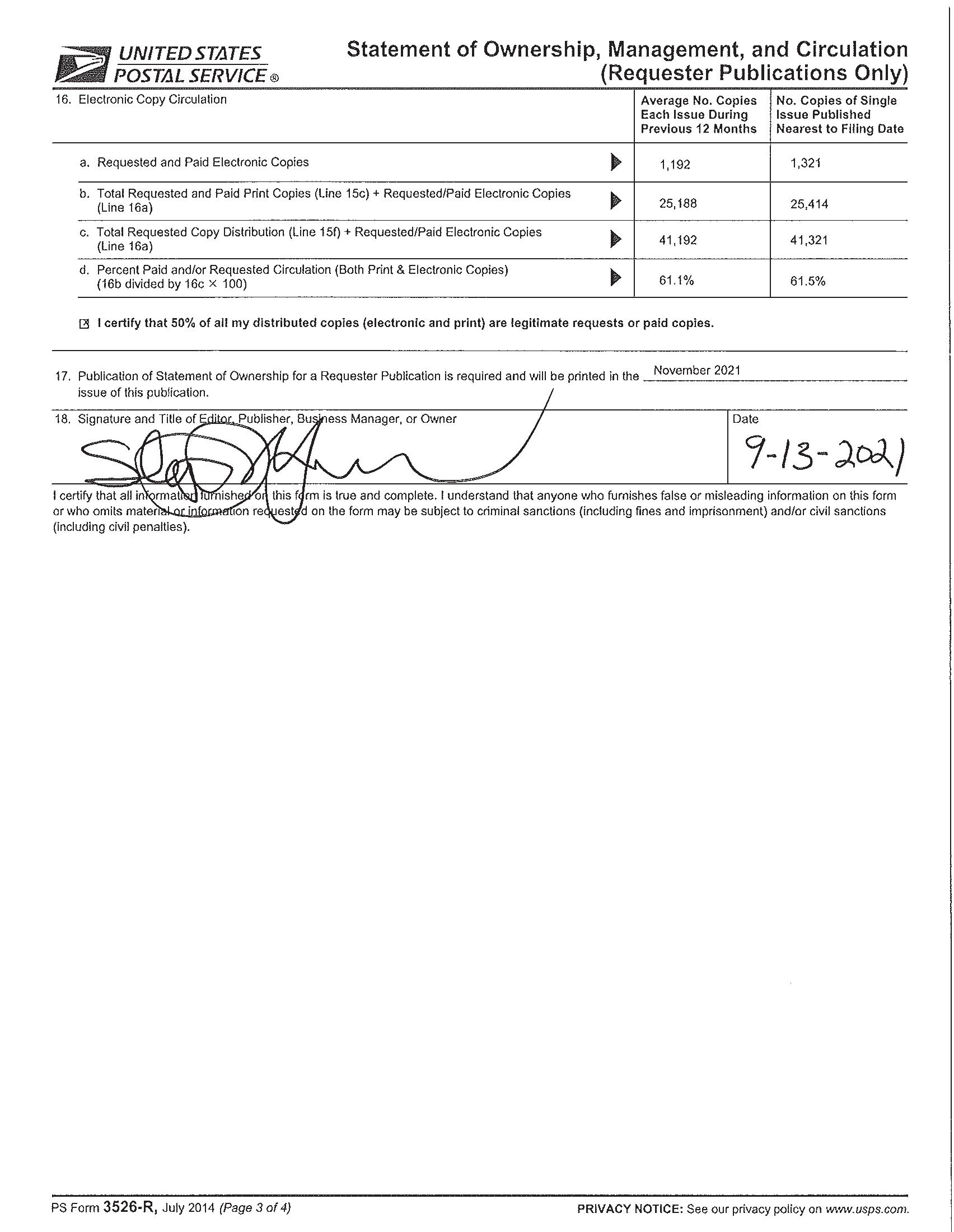


The holiday season is upon us, and the last thing you want to worry about is a “silent night” during the “most wonderful time of the year.” So how can you get creative in your marketing over the next two months? Here are four ideas that have generated excitement at independent and chain pizzerias in recent years.
In 2018, UNO Pizzeria & Grill restaurants in Dayton, Ohio, let parents book reservations for their children to enjoy lunch with Santa Claus. The kiddies got to bend the old man’s ear about their wish lists while munching on pizza, just in the “nick” of time before the jolly old elf finalized his naughty-and-nice list. Each session lasted 90 minutes, cost $9.99 per child and included a photo with Santa, arts and crafts, and storytime. Kids with a little more gumption opted to dine with the Grinch, who, we are told, refrained from stealing Christmas that year.

Create a holiday date-night bundle.
With locations in Jersey City and Asbury Park, New Jersey, Pizza Porta knows how to get customers in the mood for Christmas and a little smoochie-woochie. In 2020, Pizza Porta offered a seasonal date-night bundle like none other: Couples shared two pizzas and a carafe of wine or a pitcher of beer, then went home with a Christmas tree of their choice. Bundle prices started at $60 and climbed up to $85 for a larger tree.
3Stuff an online Christmas stocking.
Pat’s Pizza in Ellsworth, Maine, launched a Christmas 2017 campaign on Facebook that earned thousands of reactions, comments and shares while crosspromoting other businesses in the area. The pizzeria gave away more than $1,000 in goodies from local retailers and shops in the Ultimate Christmas Stocking contest. These included gift cards from a local bakery, a beer store, a florist and the hometown Walmart and Starbucks; a necklace from a local jeweler; VIP car wash tickets; mugs, T-shirts and candy; and two $200 gift cards for Pat’s itself. Over the course of the campaign, the posts garnered 10,752 reactions, 7,240 comments and 6,828 shares.
4Create a Christmas pizza.
That’s exactly what the Canadian chain Boston Pizza did in 2019. The pie featured seasoned rotisserie turkey, stuffing, cranberry sauce, Italian cheeses and a rosemary cream sauce. Create your own recipe, but don’t forget the gravy on top, or you’ll find nothing but coal in your stocking.
UNO PIZZERIA & GRILL
Winners will be announced LIVE on US Pizza Team’s Facebook, Tuesday, November 16th, 2PM CST . Join us to find out who walks away with national bragging rights to the Best Pizza in the US and cash prizes! There will be live, INTERACTIVE commentary by judges and competitors alike on the winning submissions, so join in on the fun.
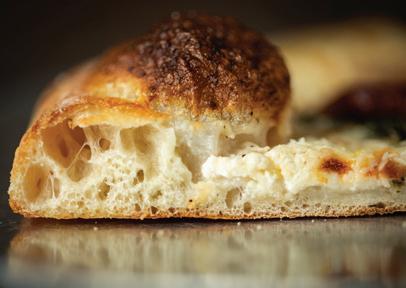
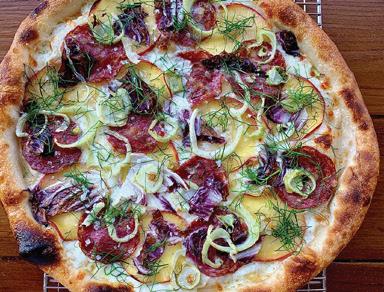
To watch this event, visit pmq.com/schedule
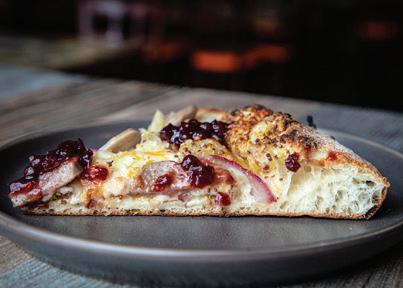 2020 VUSPC: 1st Place - Lars Smith, State of Mind Public House & Pizzeria, Los Altos, CA.
2020 VUSPC: 2nd Place - Sean Dempsey, Dempsey’s Brewery Pub & Restaurant, Watertown, SD.
2020 VUSPC: 3rd Place - Rico Lunardi, Slice on Broadway, Pittsburgh, PA.
2020 VUSPC: 1st Place - Lars Smith, State of Mind Public House & Pizzeria, Los Altos, CA.
2020 VUSPC: 2nd Place - Sean Dempsey, Dempsey’s Brewery Pub & Restaurant, Watertown, SD.
2020 VUSPC: 3rd Place - Rico Lunardi, Slice on Broadway, Pittsburgh, PA.

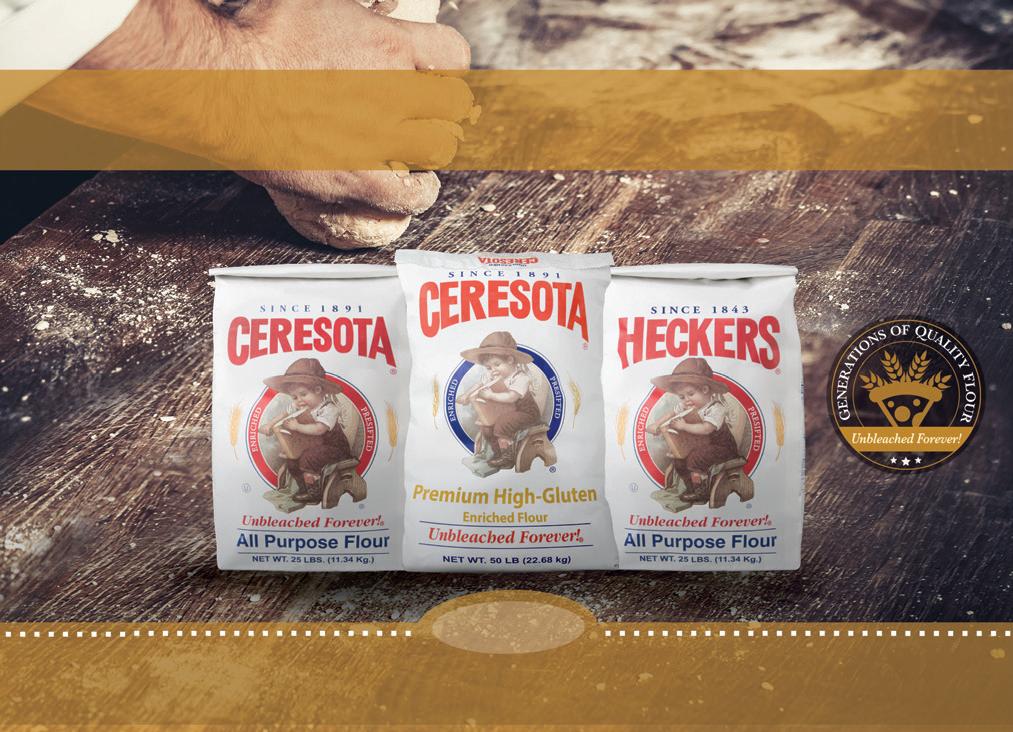
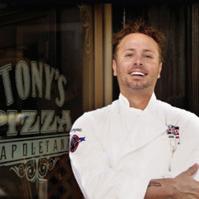








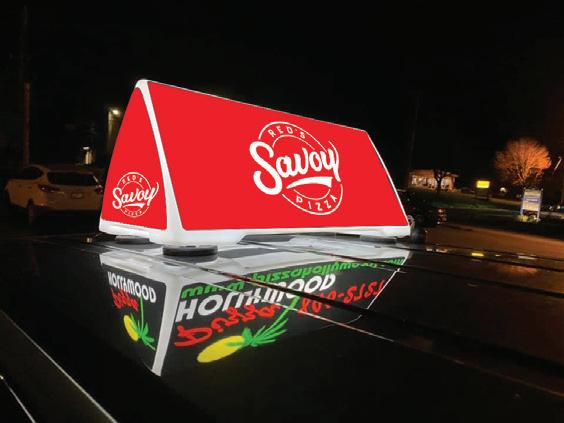


• Business ordering application designed specifically for the iPad


• Allows for quick and easy ordering of inventory for your business
• E-mail your order to your vendor quickly and easily.


• Minimum requirement iOS Version 14.8

• Just $3.99 per month
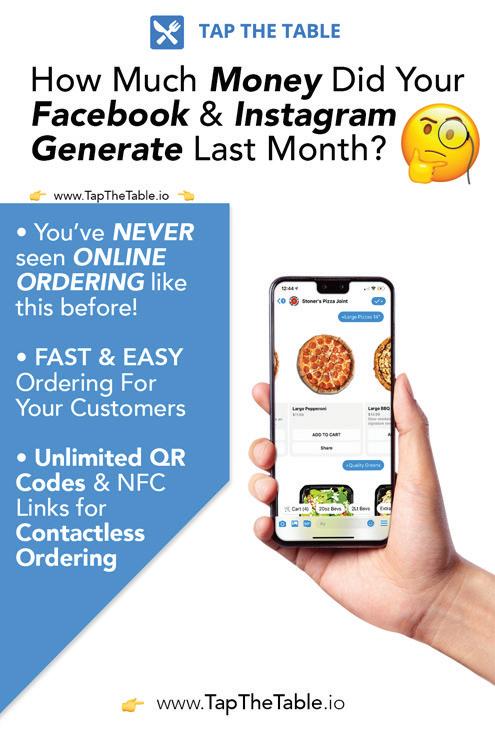



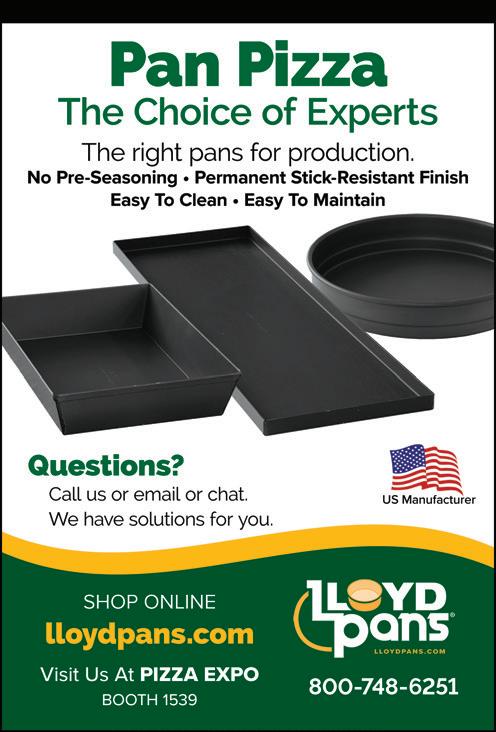


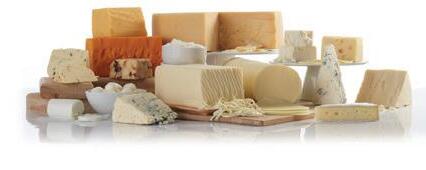


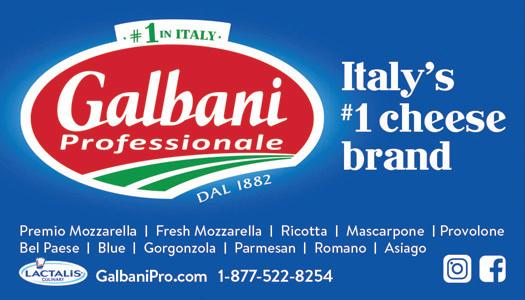










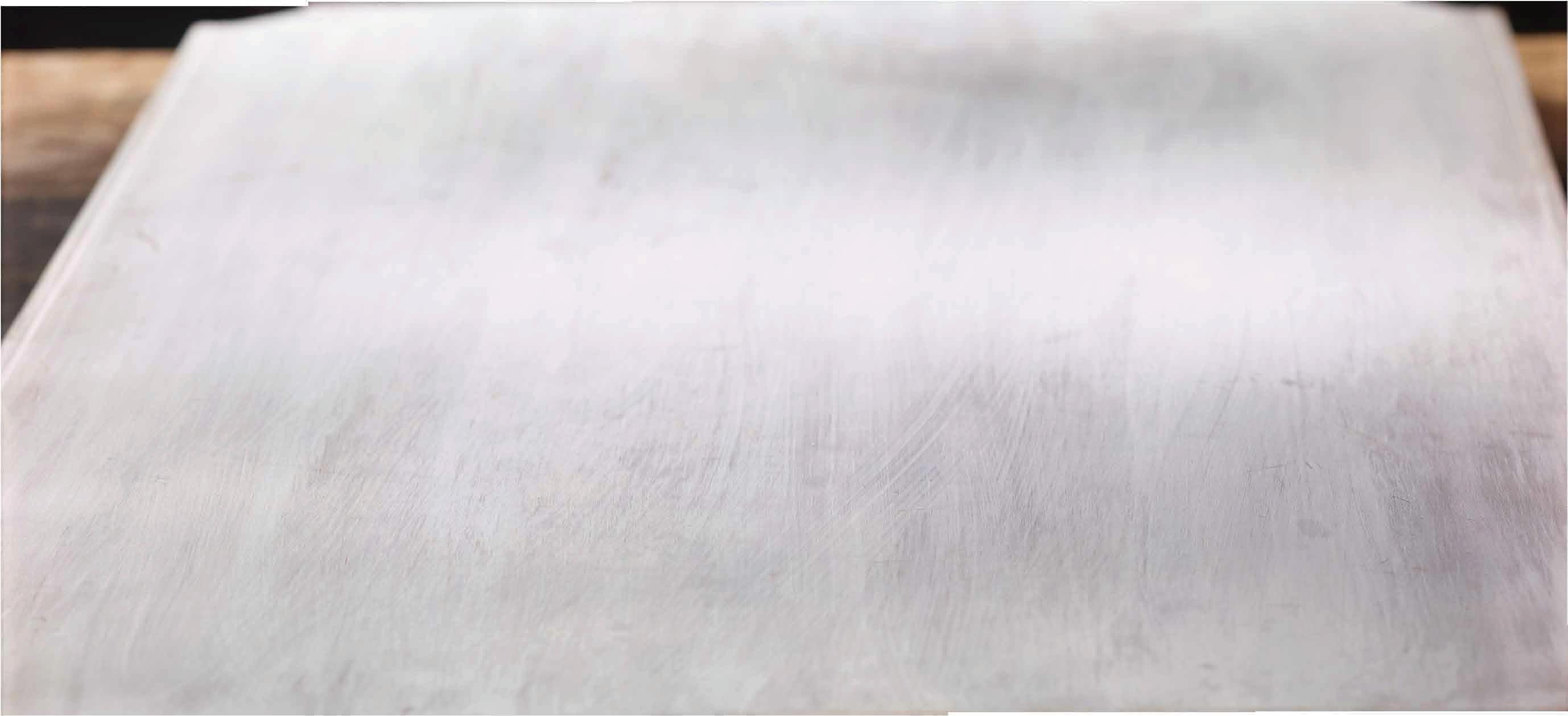
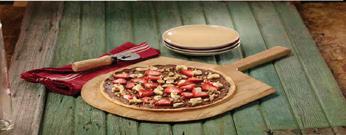
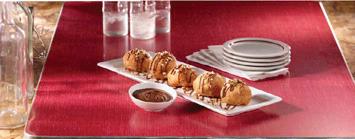
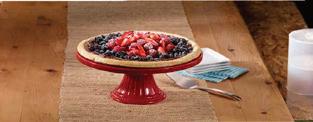
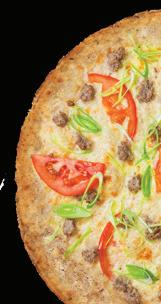
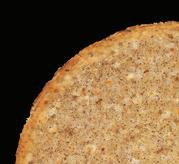









» Outlasts plastic trays
» Won’t bend or dent
» Withstands temps -60 o to 250 o F
» Lids and dollies available

» Custom color matching PH


DOUGH
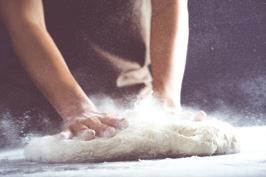
• Dough Trays Standard & Artisan Sizes – extremely durable and airtight. Outlasts all other Plastic & Fiberglass Dough Trays!

• Dough Tray Covers – designed to fit.


-- Standard & Artisan Sizes – extremely durable and airtight. engineered to fit.




• Dough Scrapers – two ergonomic designs.
• Dough Tray Dollies – heavy duty. The preferred dough tray of pizza operators in the US and Abroad for over 30 years! Order by phone or online. Call 908-276-8484 www.doughmate.com

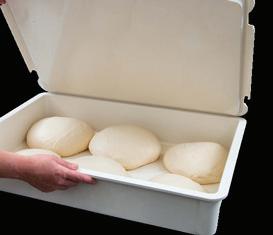


908-276-8484.............. www.doughmate.com


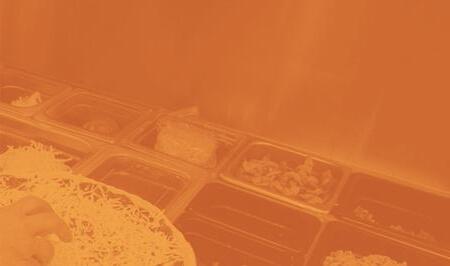


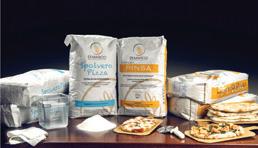

GLUTEN-FREE








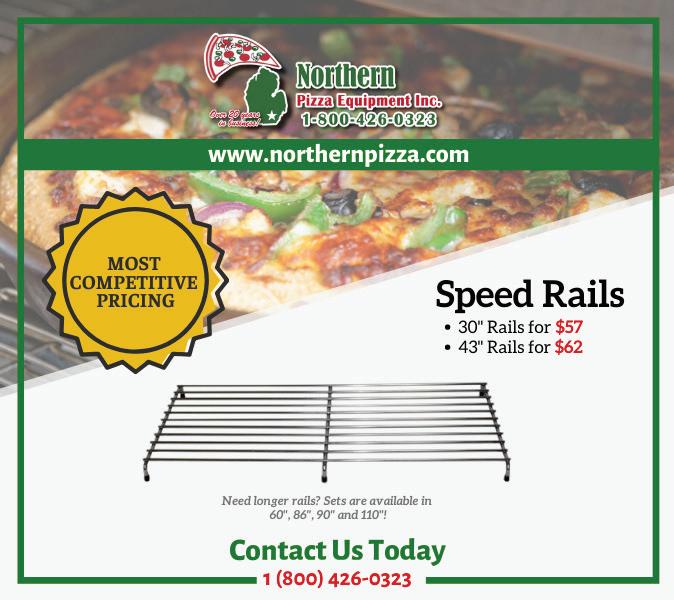



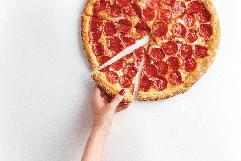




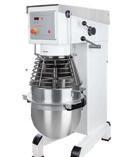
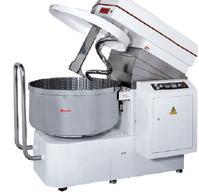
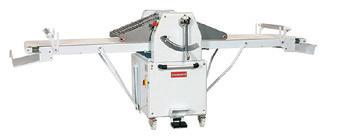
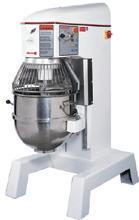
Best Choice Among Brand Name Mixers in the Market. HIGH QUALITY at a REASONABLE PRICE High Quality spiral and Planetary Mixers, Bread Slicers, Dough Sheeters, Meat Grinders, Dough Dividers/Rounders, Rotary Ovens and More! Only
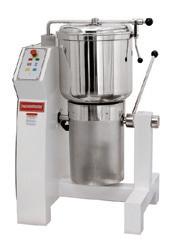

Spiral Mixers Capacity from 88lbs to 440lbs of Dough
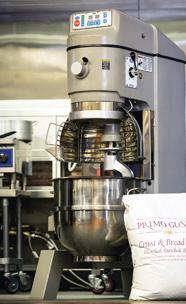
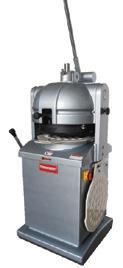
FOOD MACHINERY, INC. (PIZZA HUT OFFICAL VENDOR) 4602 Brass Way, Dallas, TX 75236

TEL: 214-331-3000; 866-7MIXERS; 866-875-6868; 866-451-1668



FAX: 214-331-3581; 972-274-5053

WEBSITE: www.thunderbirdfm.com; www.thunderbirdfm.net
PO Box 4768, Blaine, WA 98231
TEL: 360-366-0997; 360-366-9328
FAX: 360-366-0998; 604-576-8527

EMAIL: tbfm@tbfm.com; tbfmdallas@hotmail.com



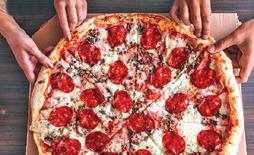



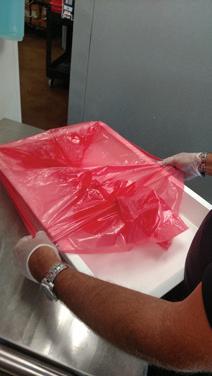




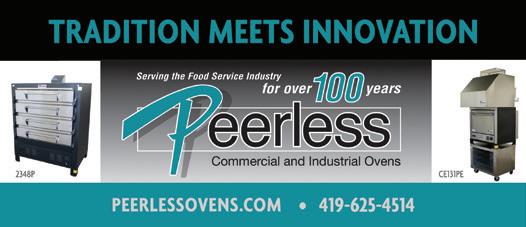




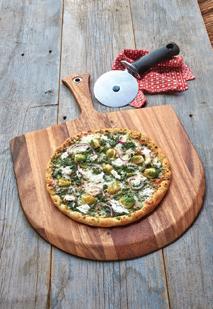


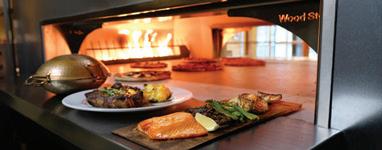








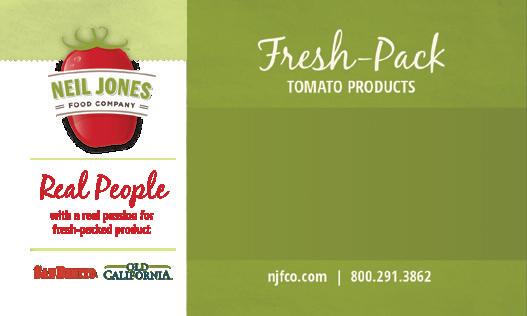


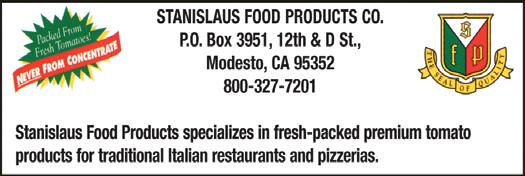






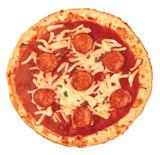



With 49 new stores solidified over the last 18 months—almost dou bling its location count—this family-friendly franchise is savoring unprecedented success.
BY TRACY MORINJames Eure started a business called The Pizza Place in 1964 in Stephenville, Texas, but when he brought his unique pies to Austin in 1969, he rebranded as Mr. Gatti’s Pizza, after his wife’s maiden name. “Mr. Gatti’s was always a successful company, and it expanded from that modest start,” explains current president and CEO Jim Phillips. “We’ve been a food-first business from day one, and we still use and feature those original recipes today—using high-quality, fresh ingredients, real smoked provolone cheese, and dough made fresh daily.”






By the late ’70s and early ’80s, the Mr. Gatti’s concept started to evolve into family entertainment centers under a second owner, who jazzed up locations with family-friendly games alongside in-house dining, pizza buffets and salad bars. Today, these locations (an average of 12,500 square feet) make up about 80% of the 112 Mr. Gatti’s locations that are now open and in development. The other 20% are smaller-footprint delivery and carryout businesses, clocking in at about 1,200 square feet. In addition to a food-first approach and an atmosphere that offers fun for the entire family, Phillips believes that the brand’s success lies in its passionate franchisees—some of whom have gone on to second- and even thirdgeneration ownership of locations over multiple decades.
Last August, Mr. Gatti’s also joined the retail game with the launch of its Famous Ranch Dressing & Dip, on sale at select locations and through its website, with nationwide expansion into grocery stores expected for 2022. “We have other proprietary products in the pipeline, now in development, which helps us expand the brand beyond our four walls,” notes Travis Smith, VP of marketing and special projects. “The launch exceeded our expectations—just a few weeks in, we were selling to 26 states, in places that never had a Mr. Gatti’s store.”
With a loyal, loving fan base and franchisees, it’s an exciting time for Mr. Gatti’s. In the previous 18 months, the brand has sold 49 new locations to almost double its footprint across nine states. “We’re very proud, but there’s no magic behind it—we just focused on sharing our story and history,” Phillips says. “We’re especially pleased that 25% of those sales came from existing franchisees who wanted to expand. We feel this is a really exciting time for our half-century-old brand. We feel so blessed to not only be here this long, but to be thriving.”
Tracy




